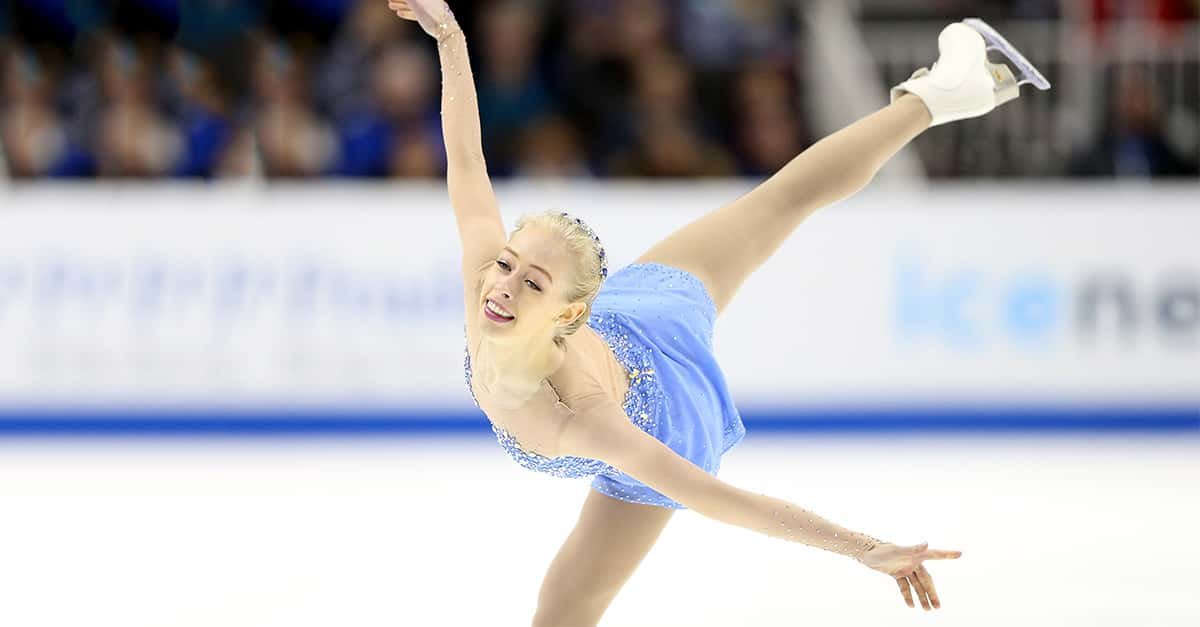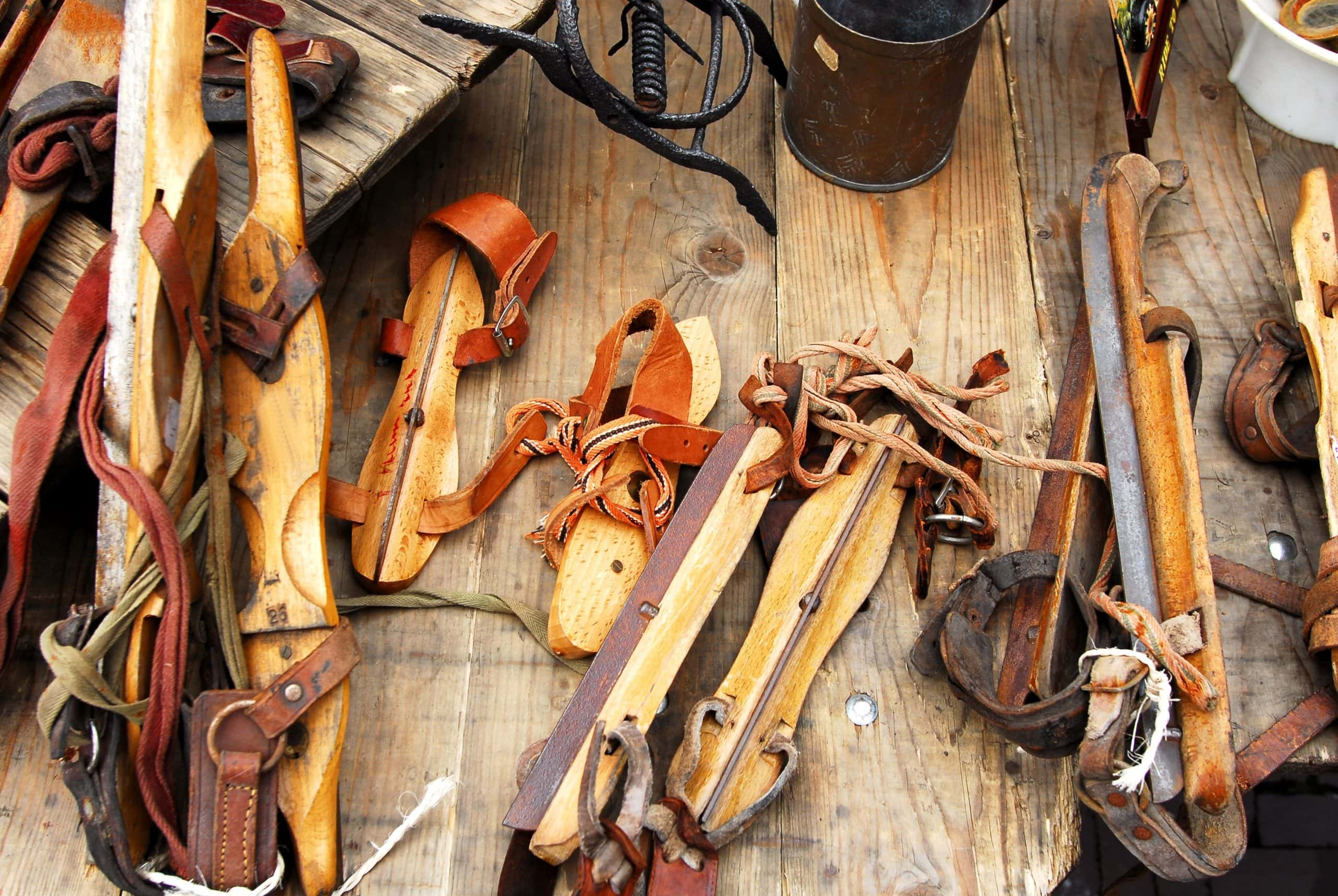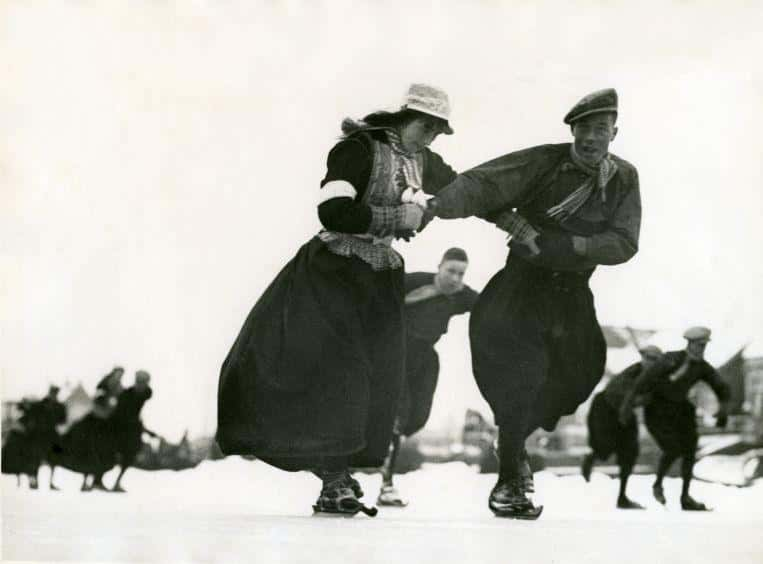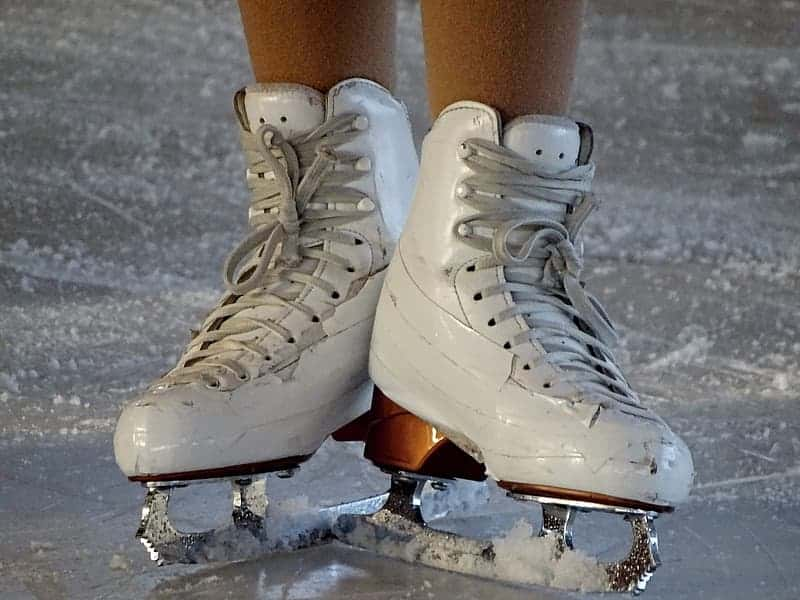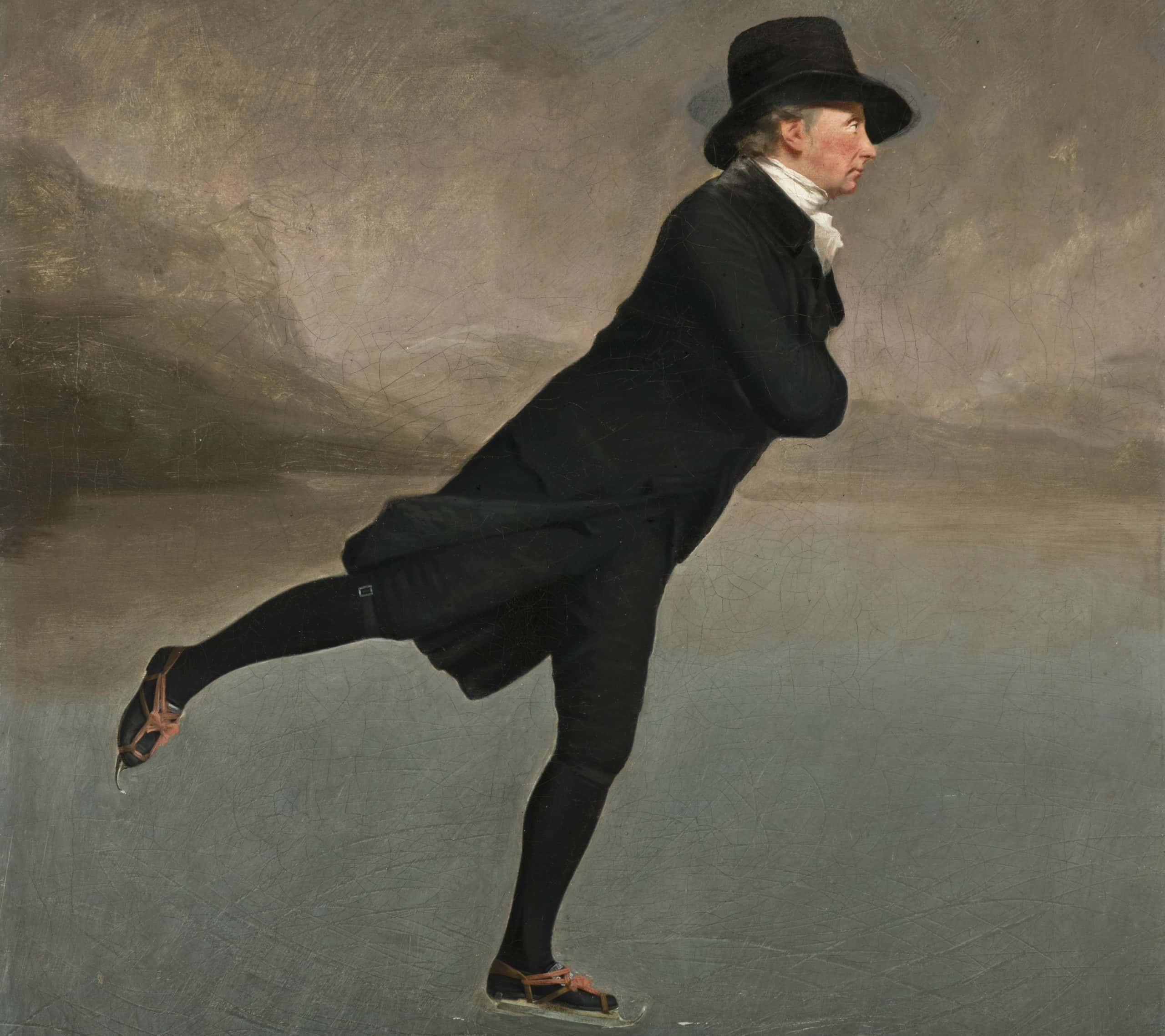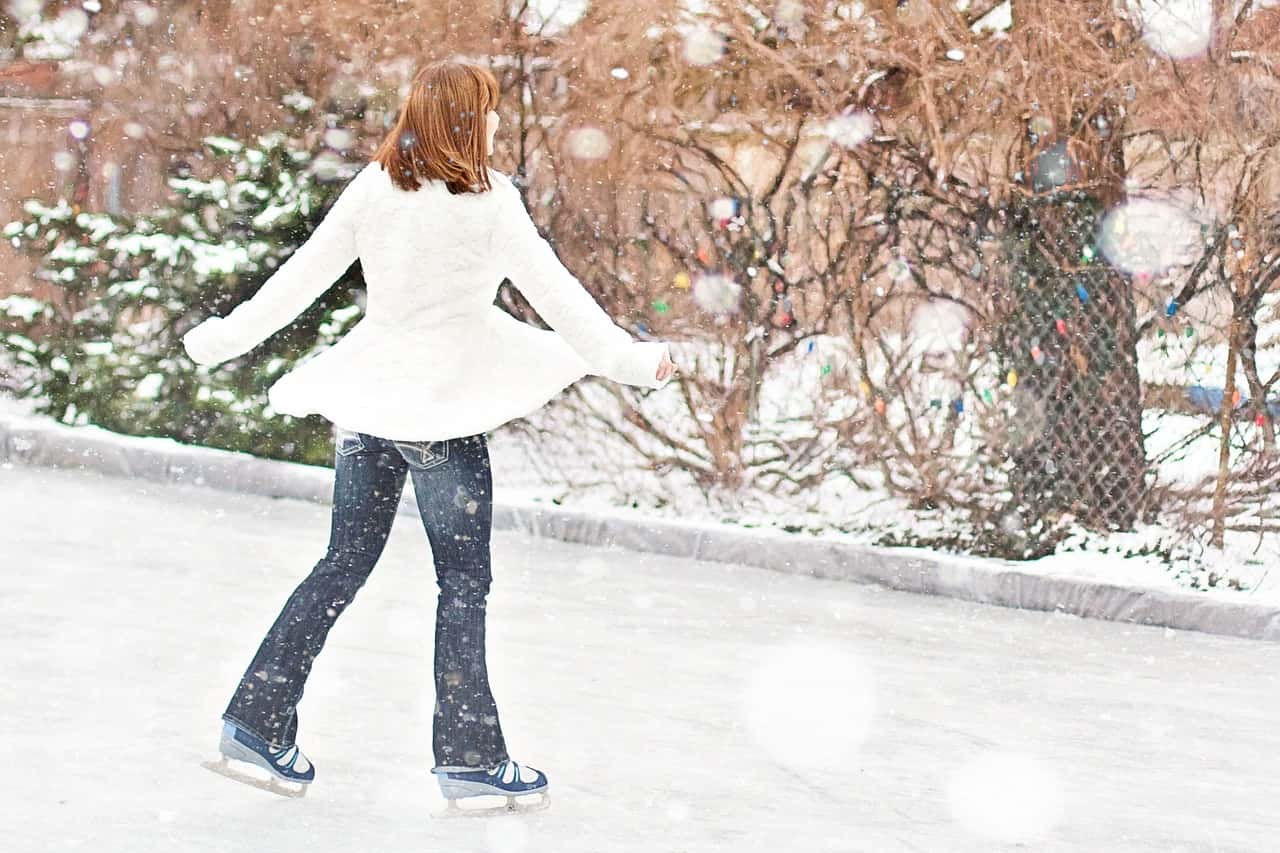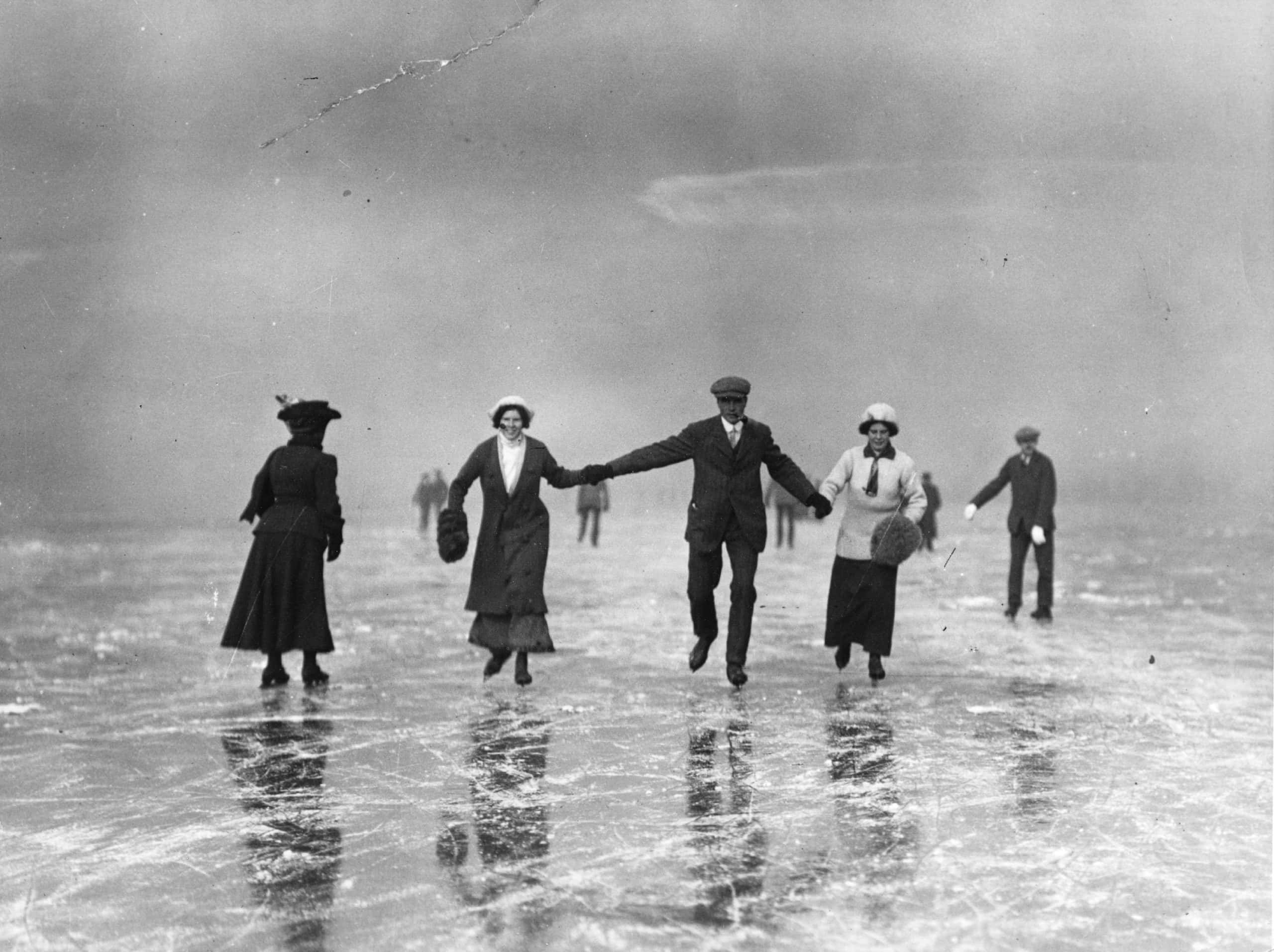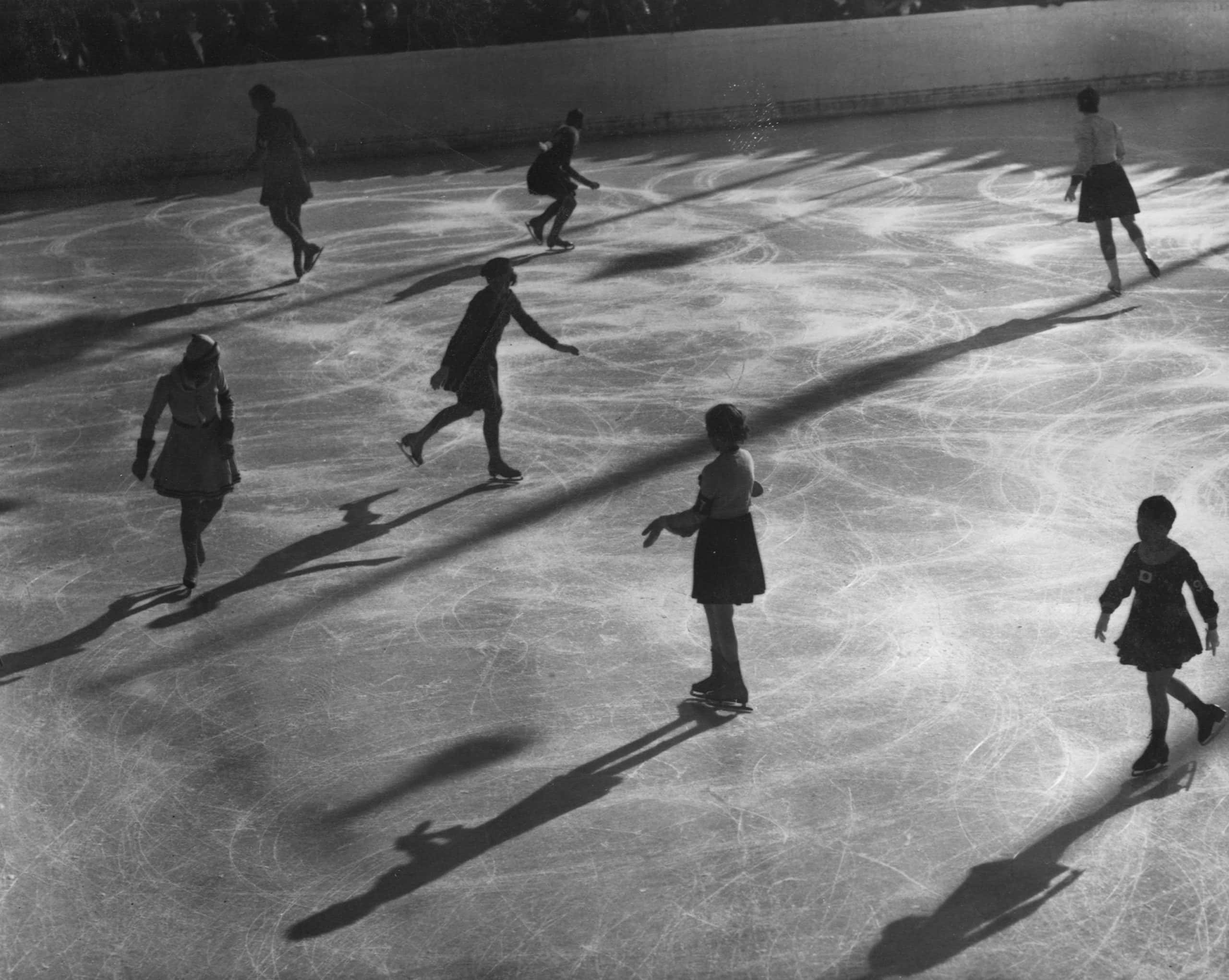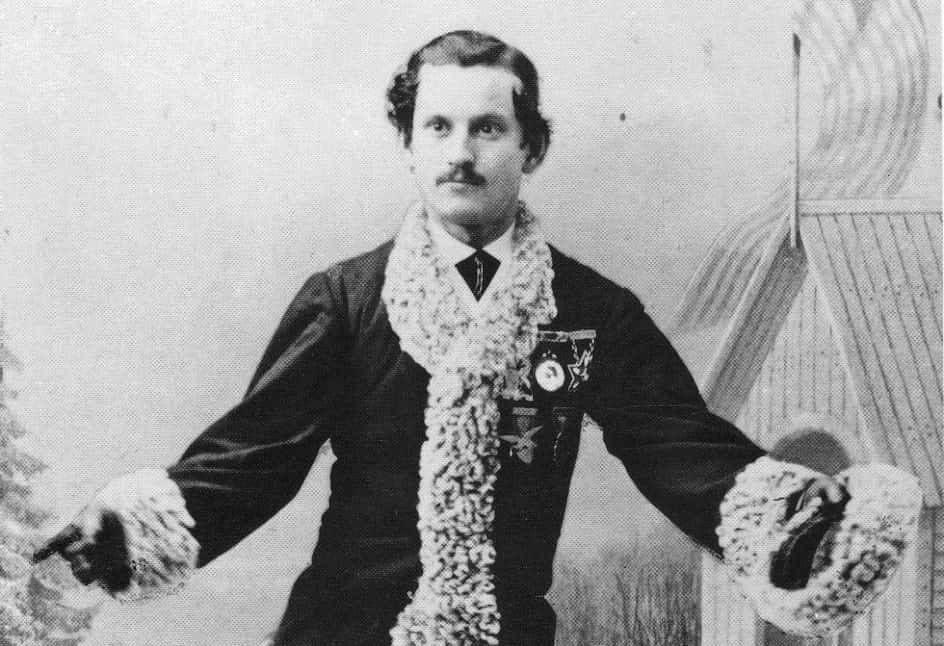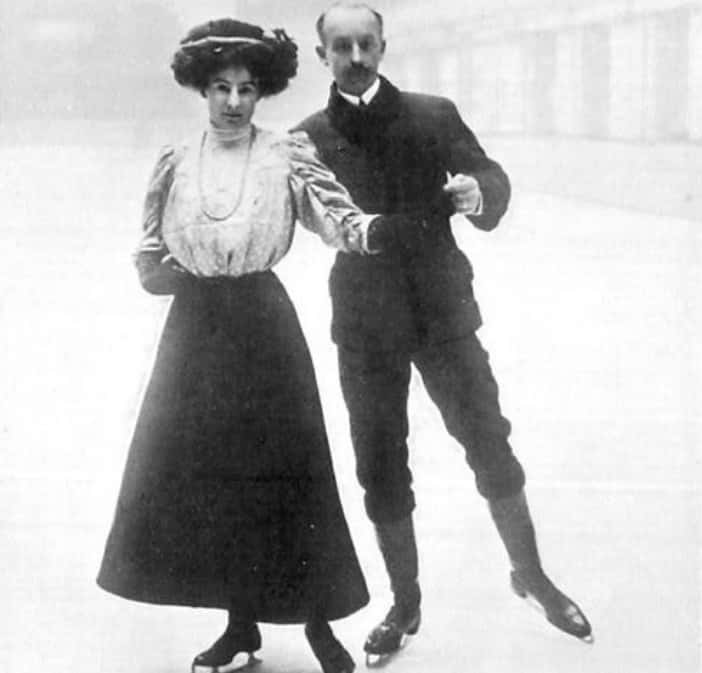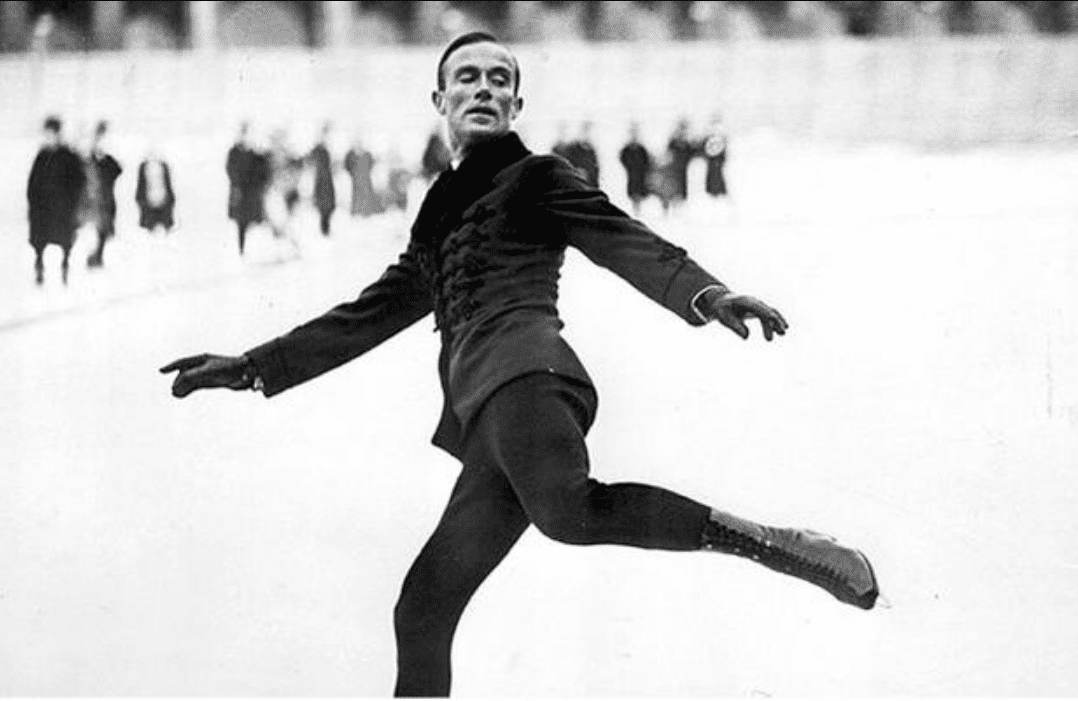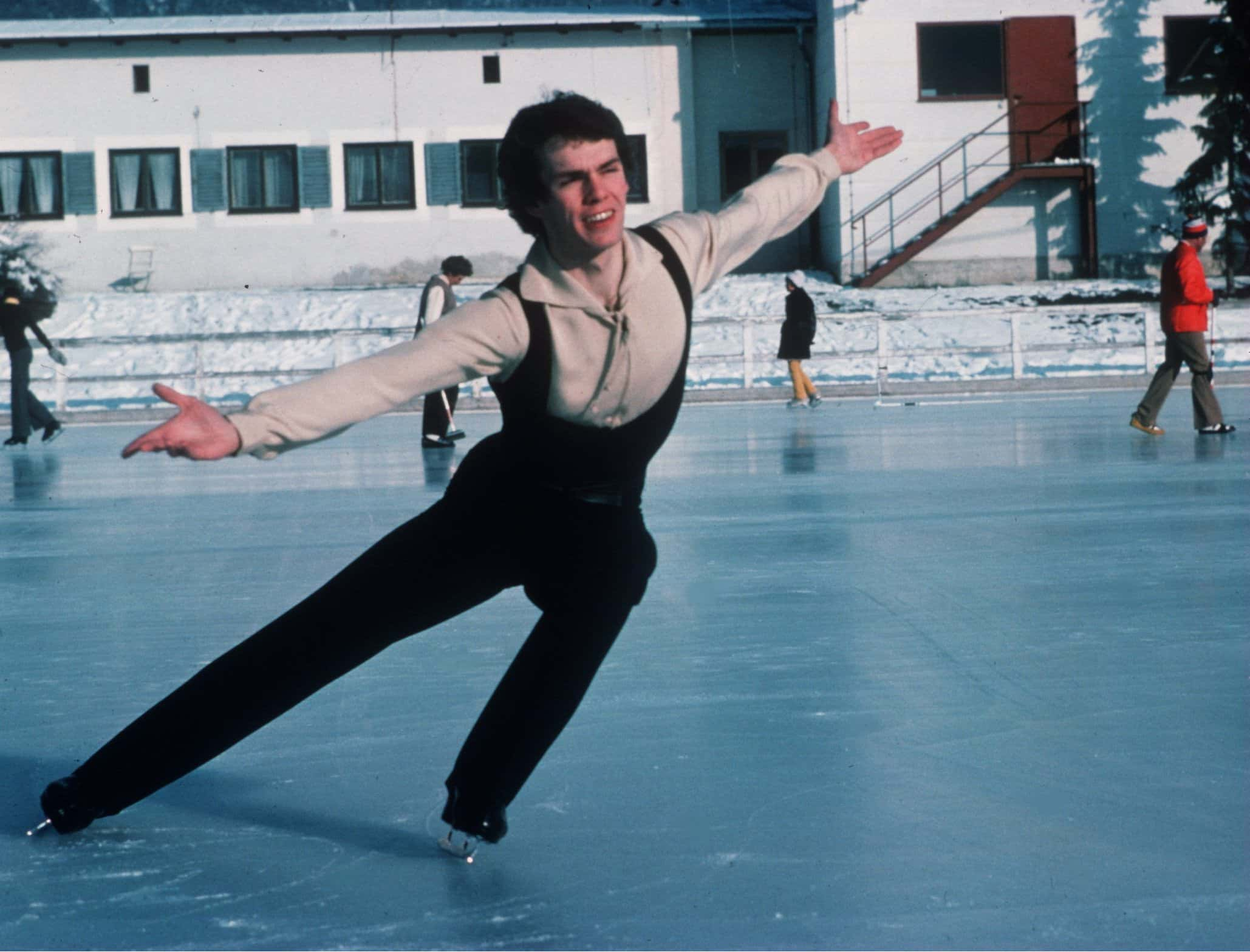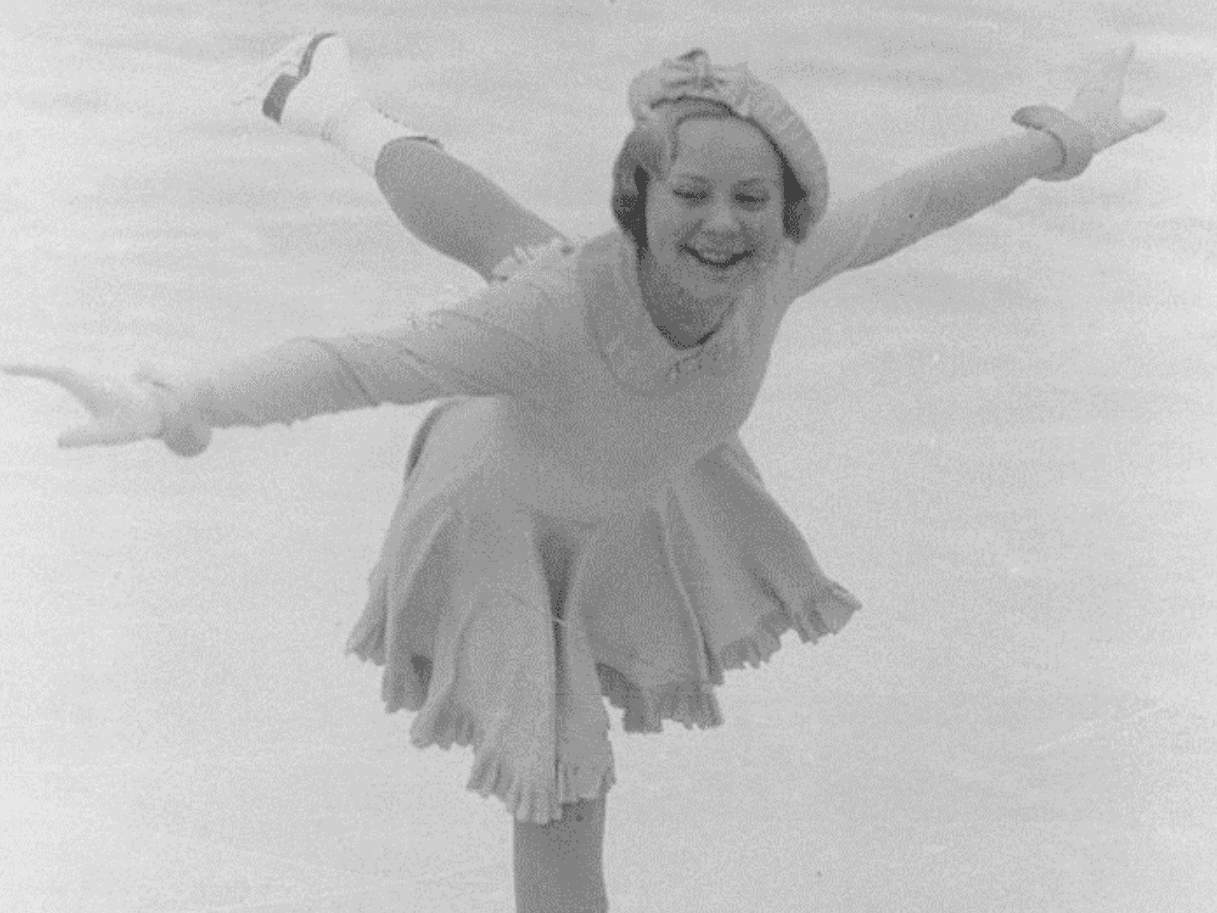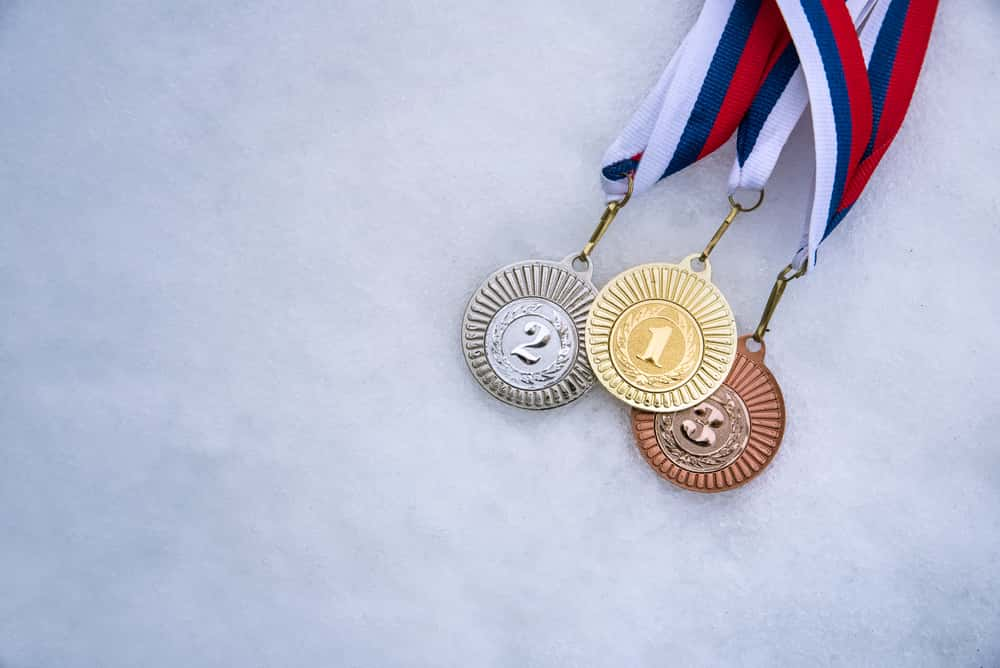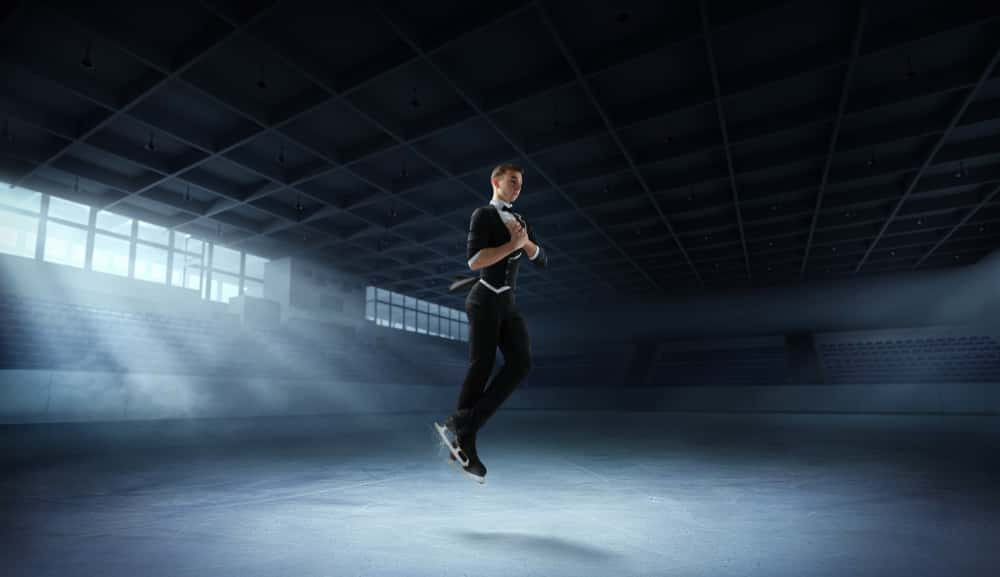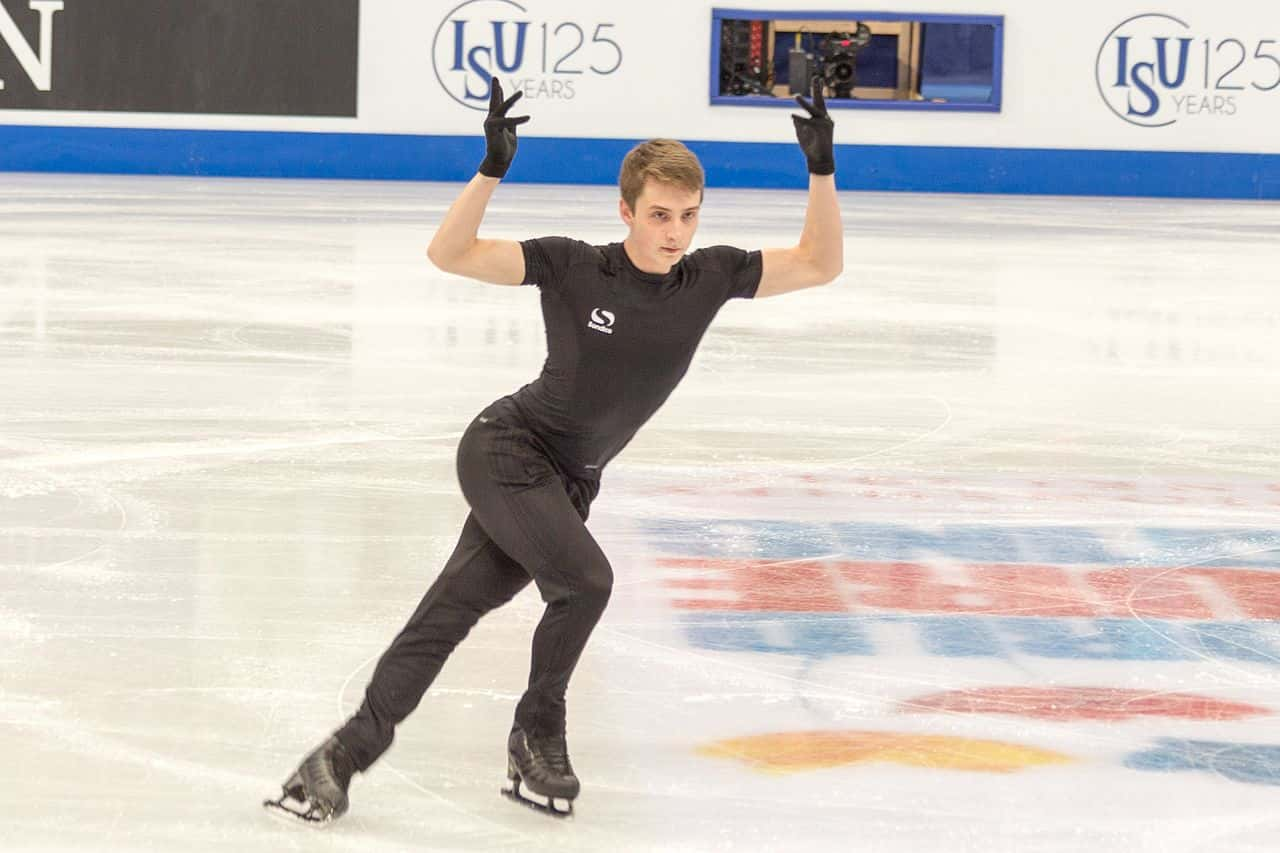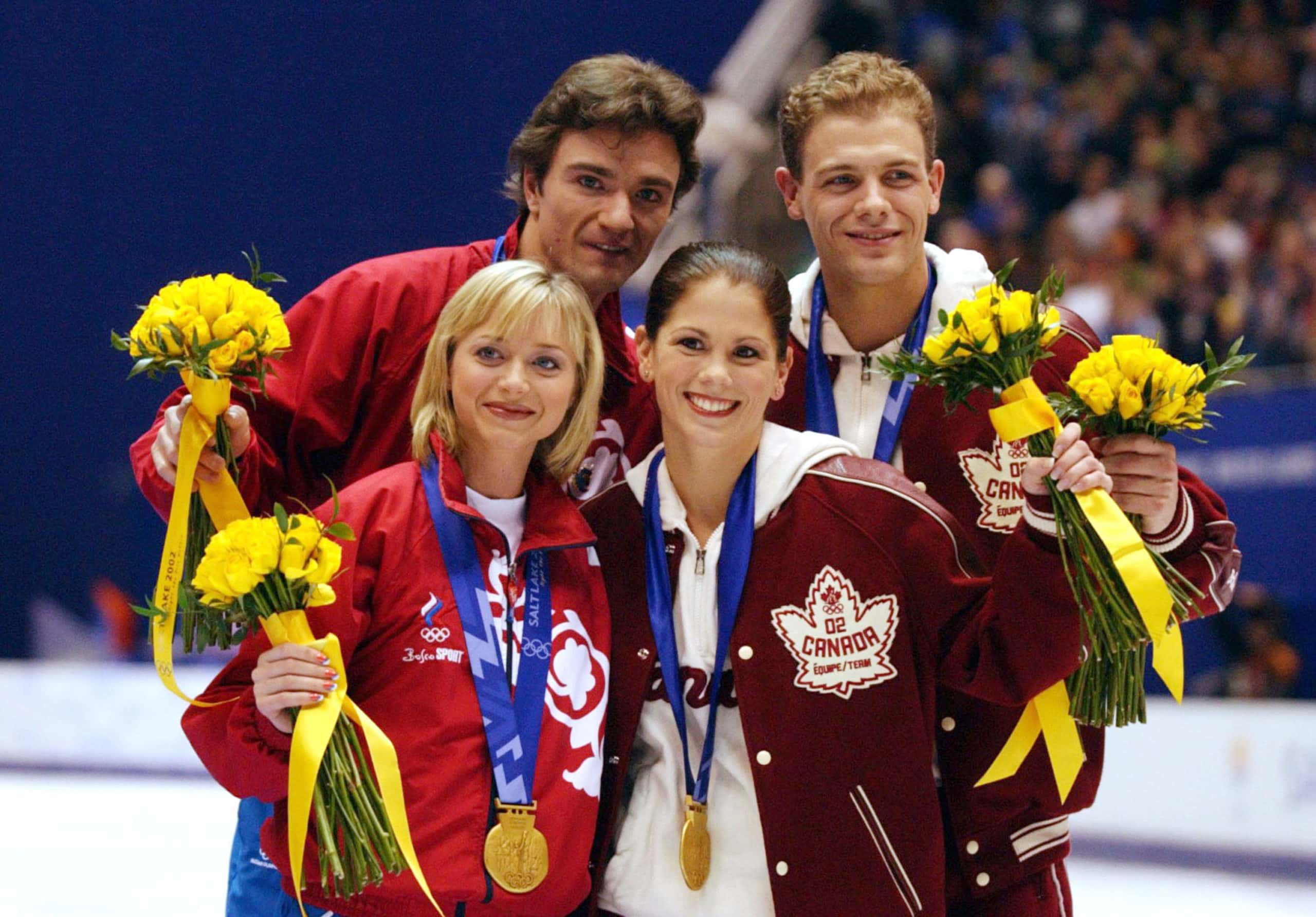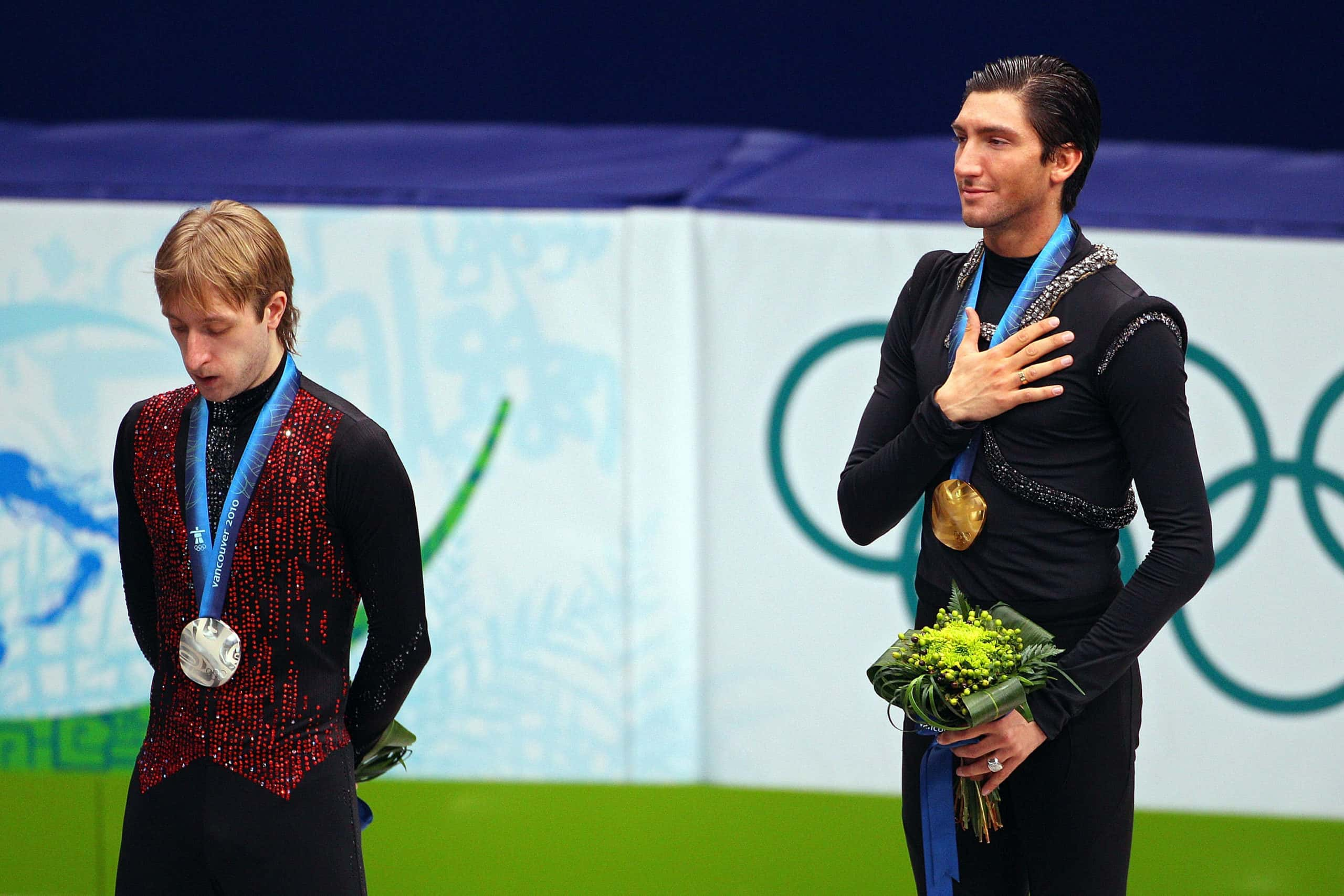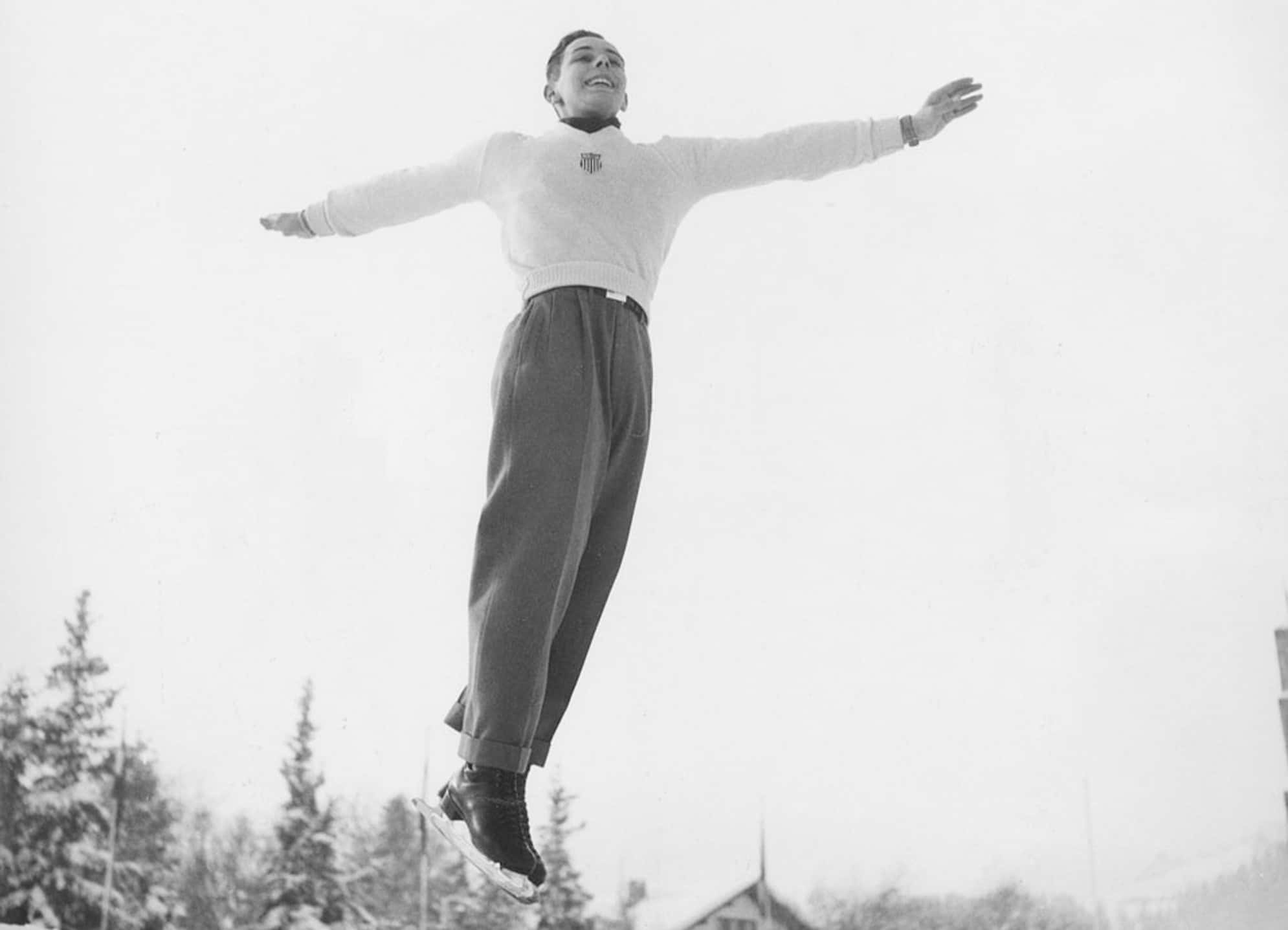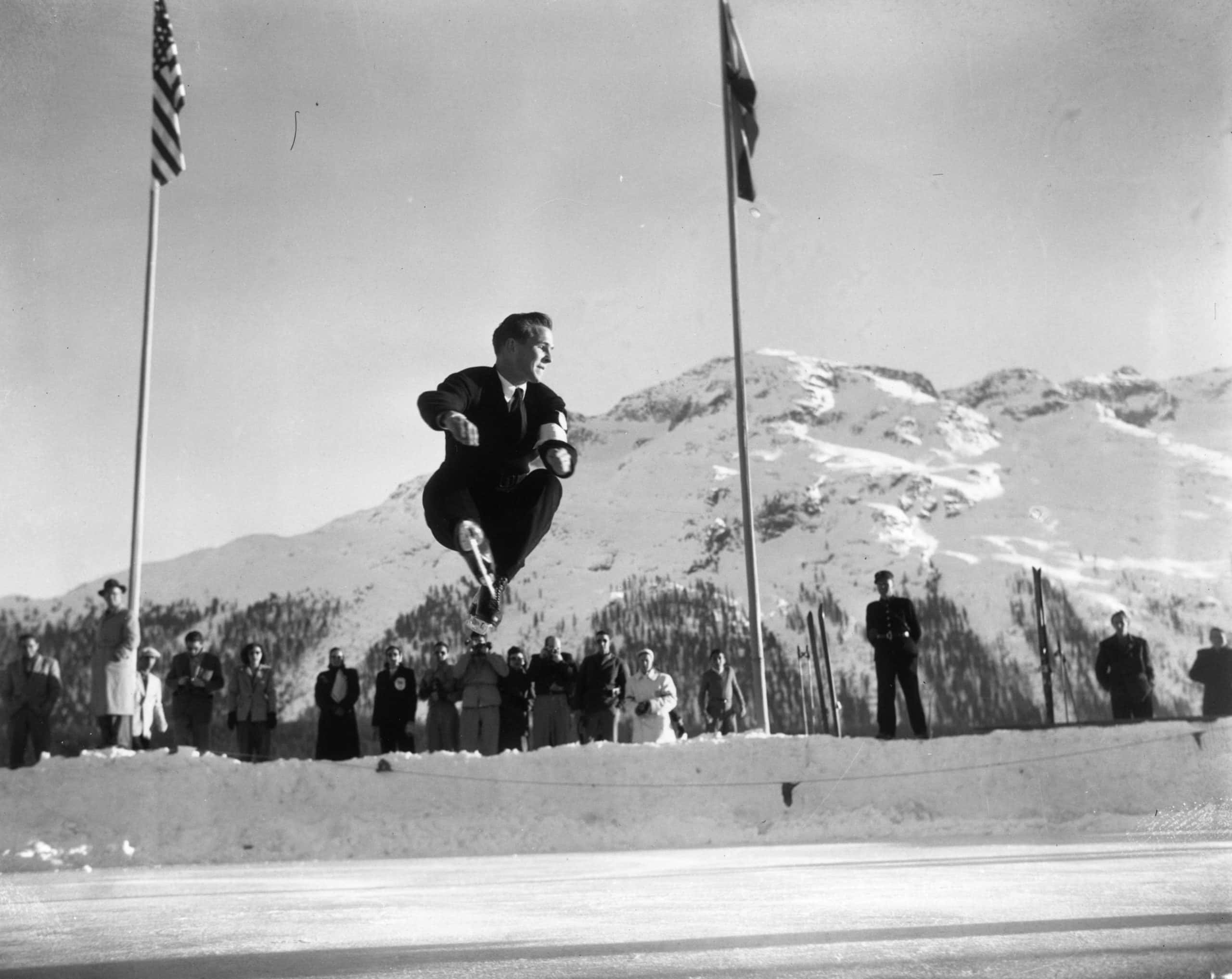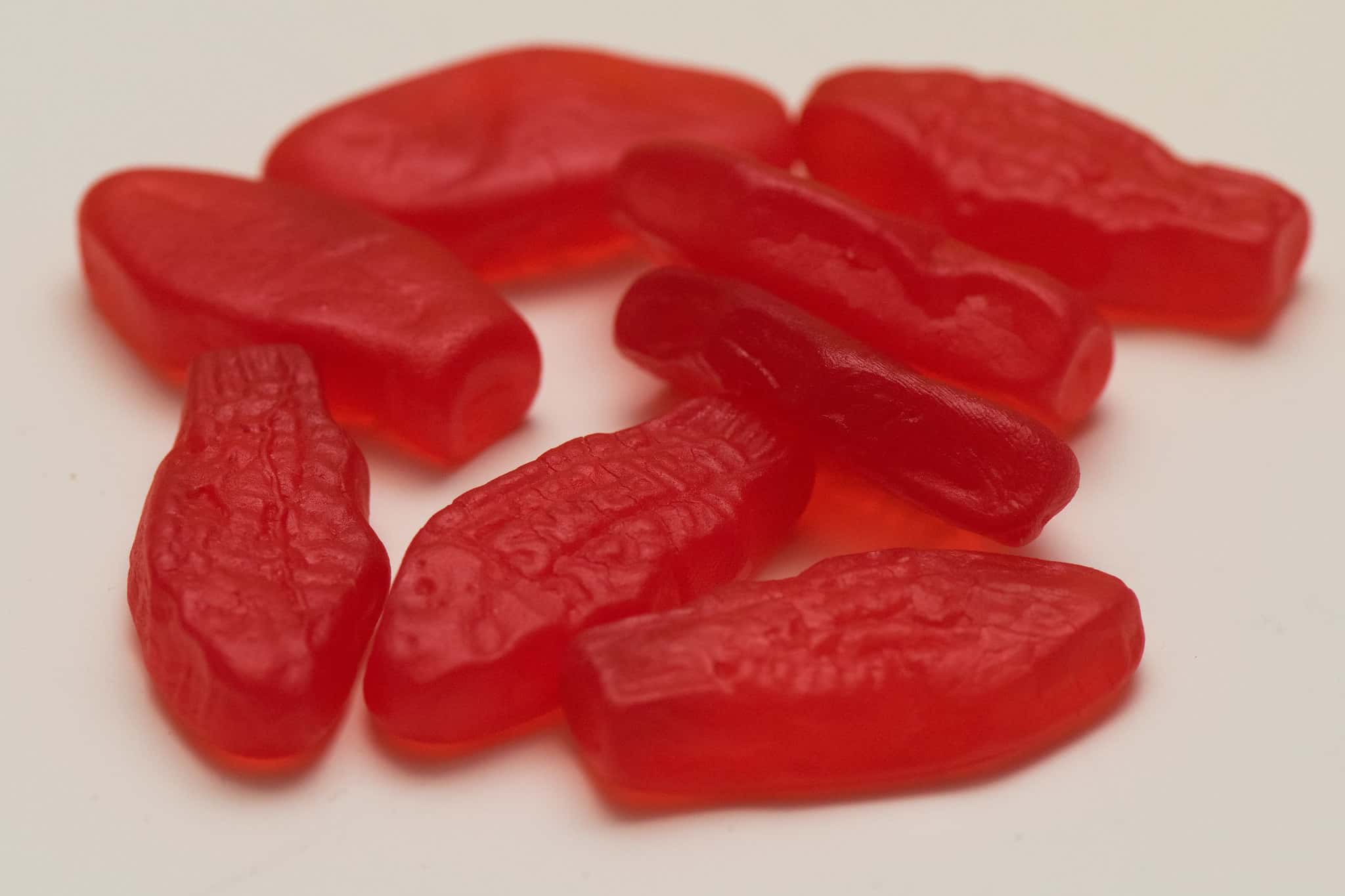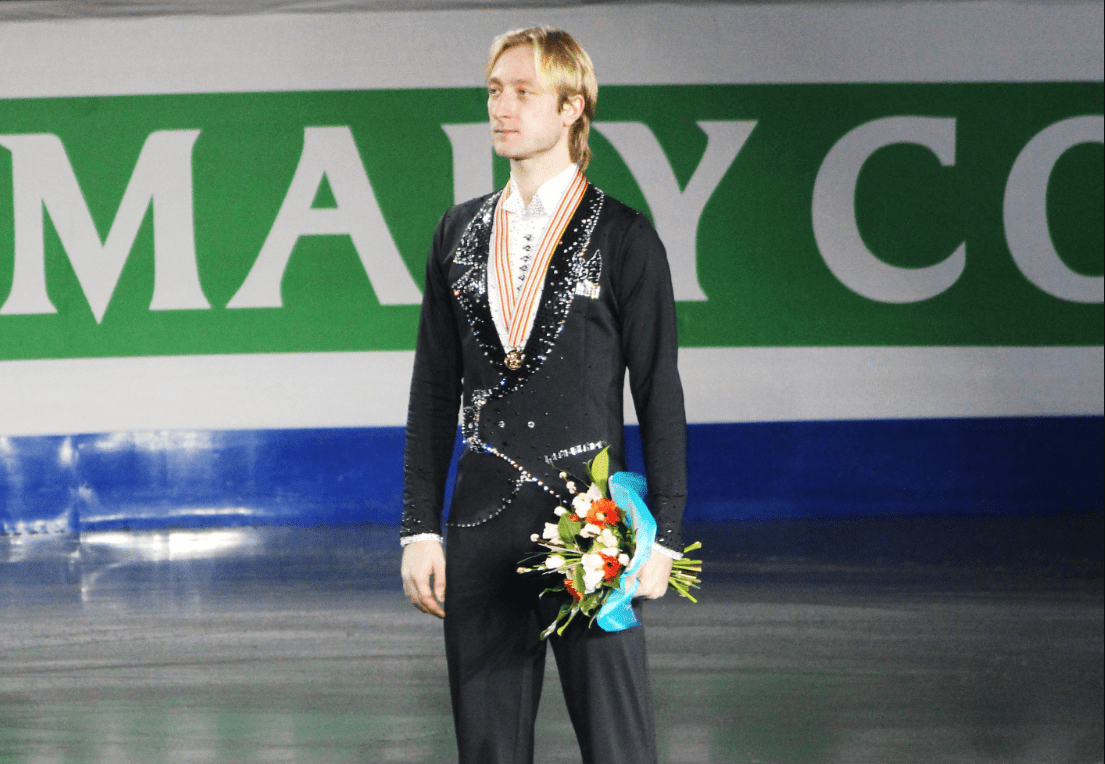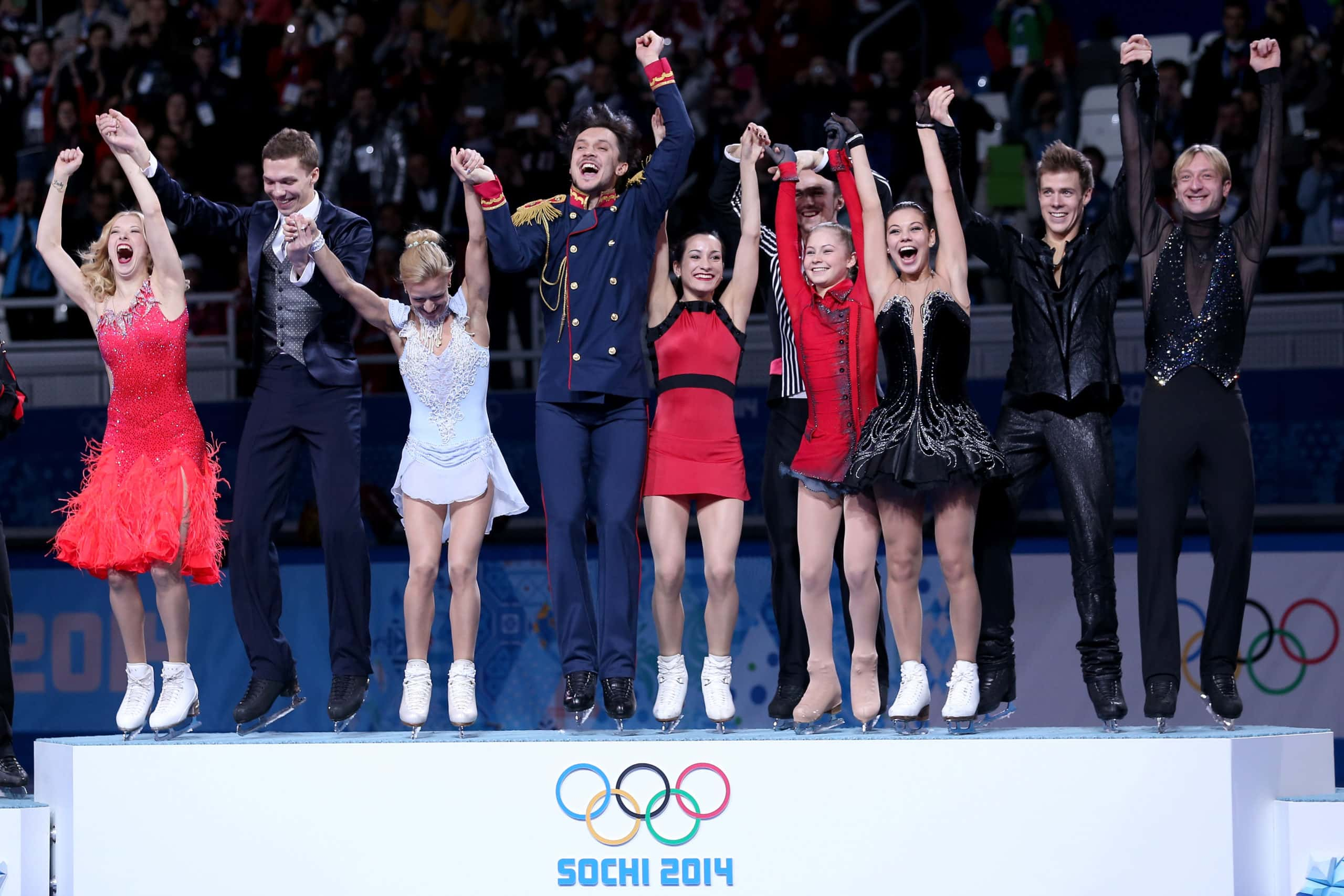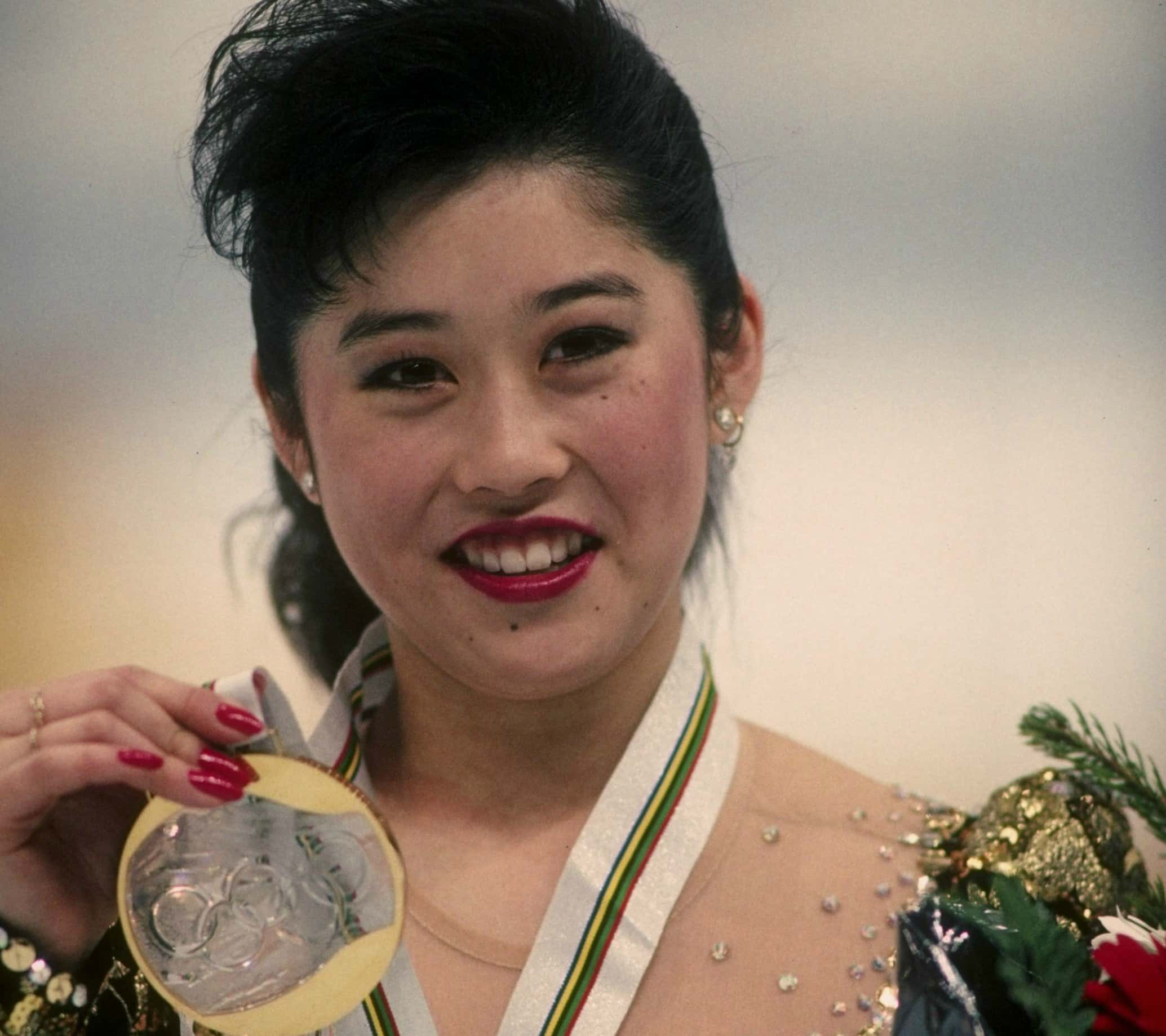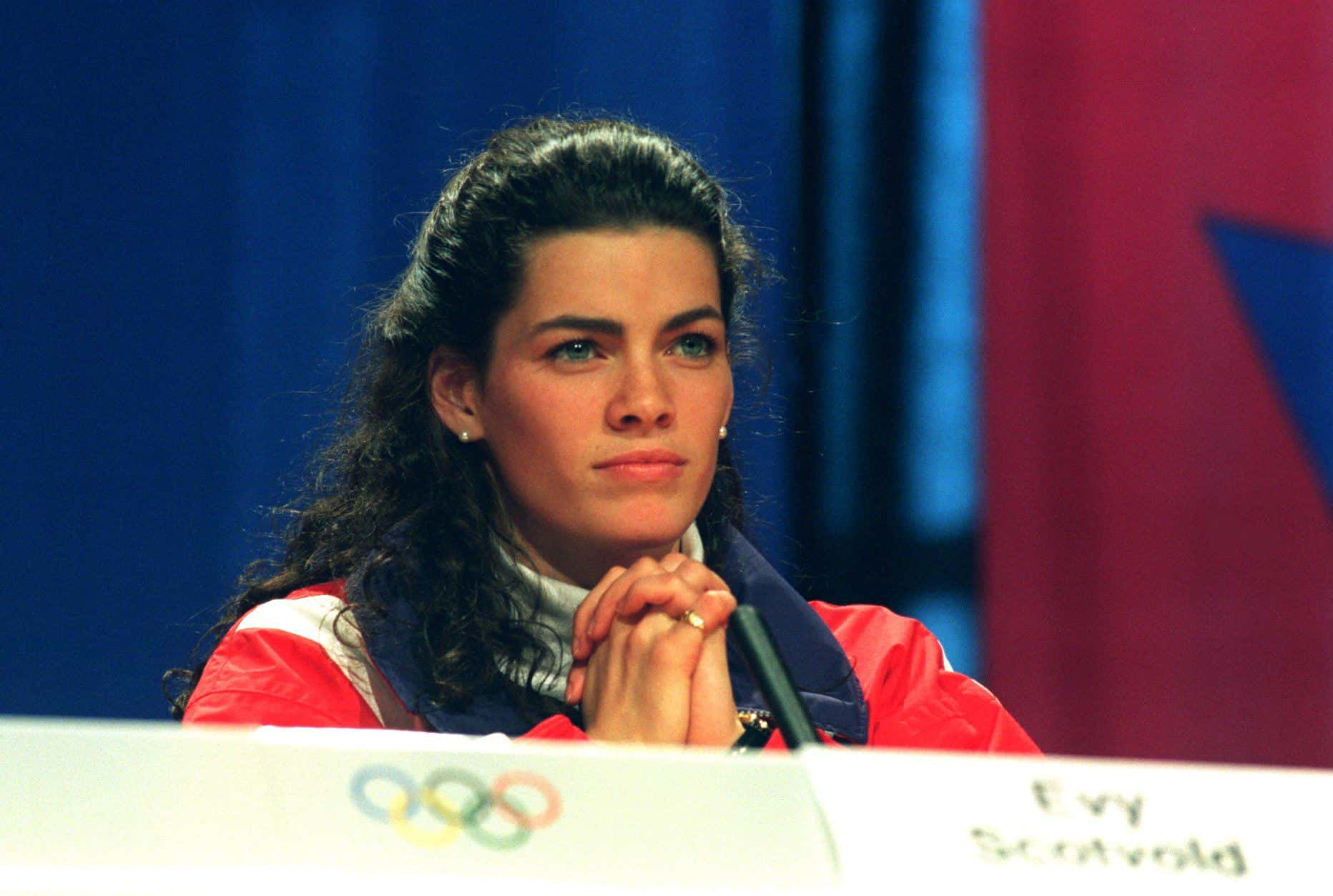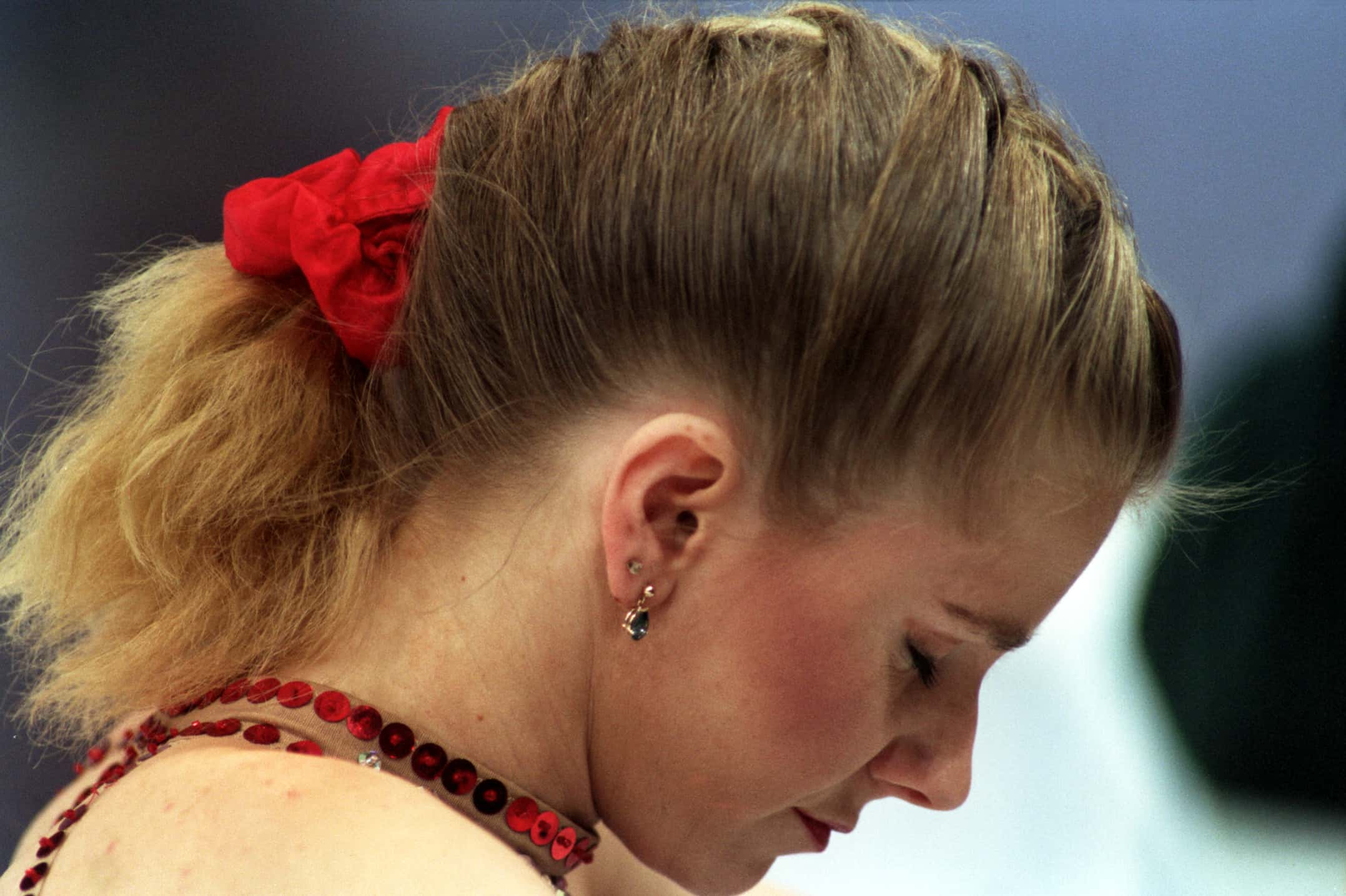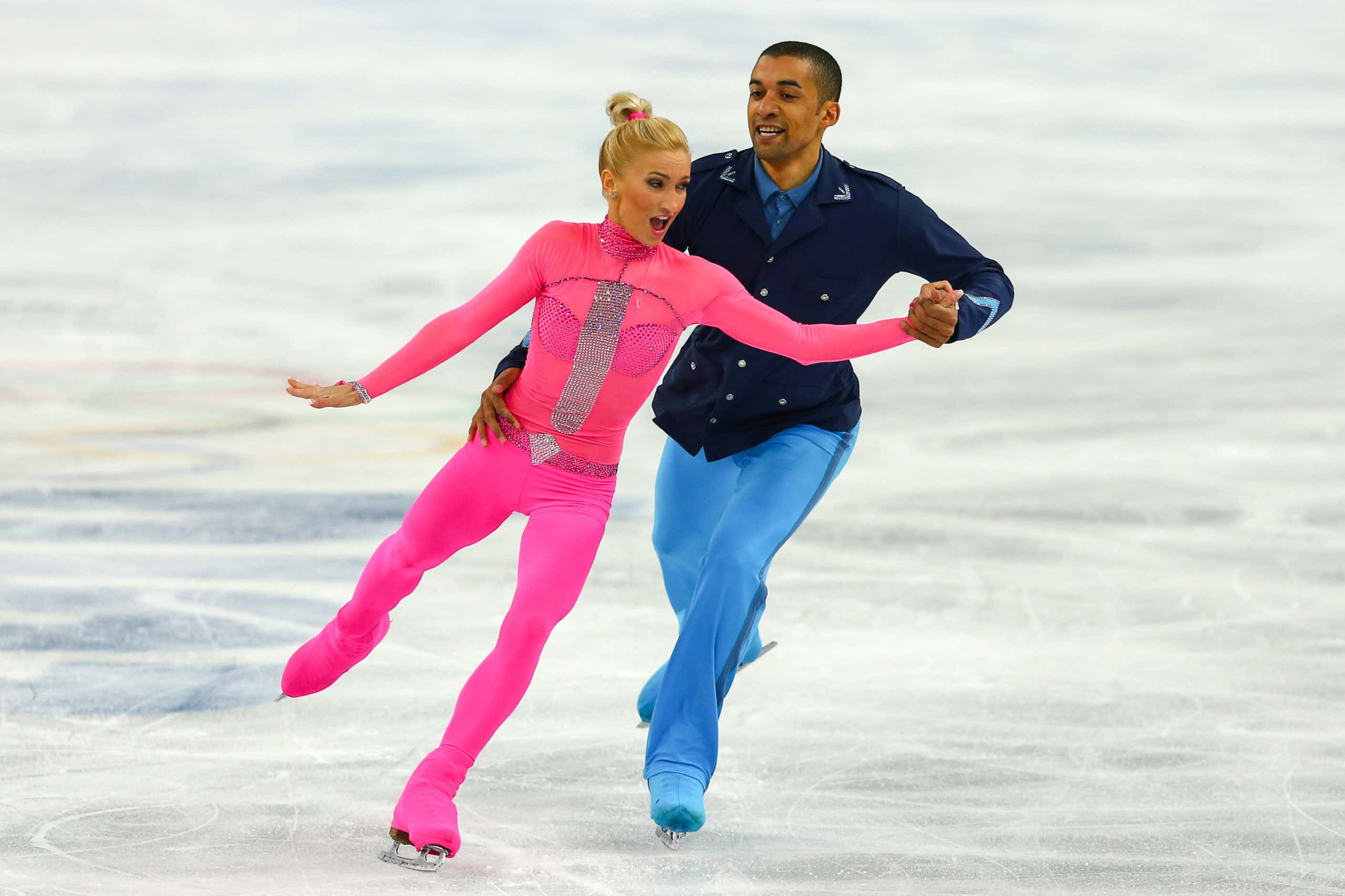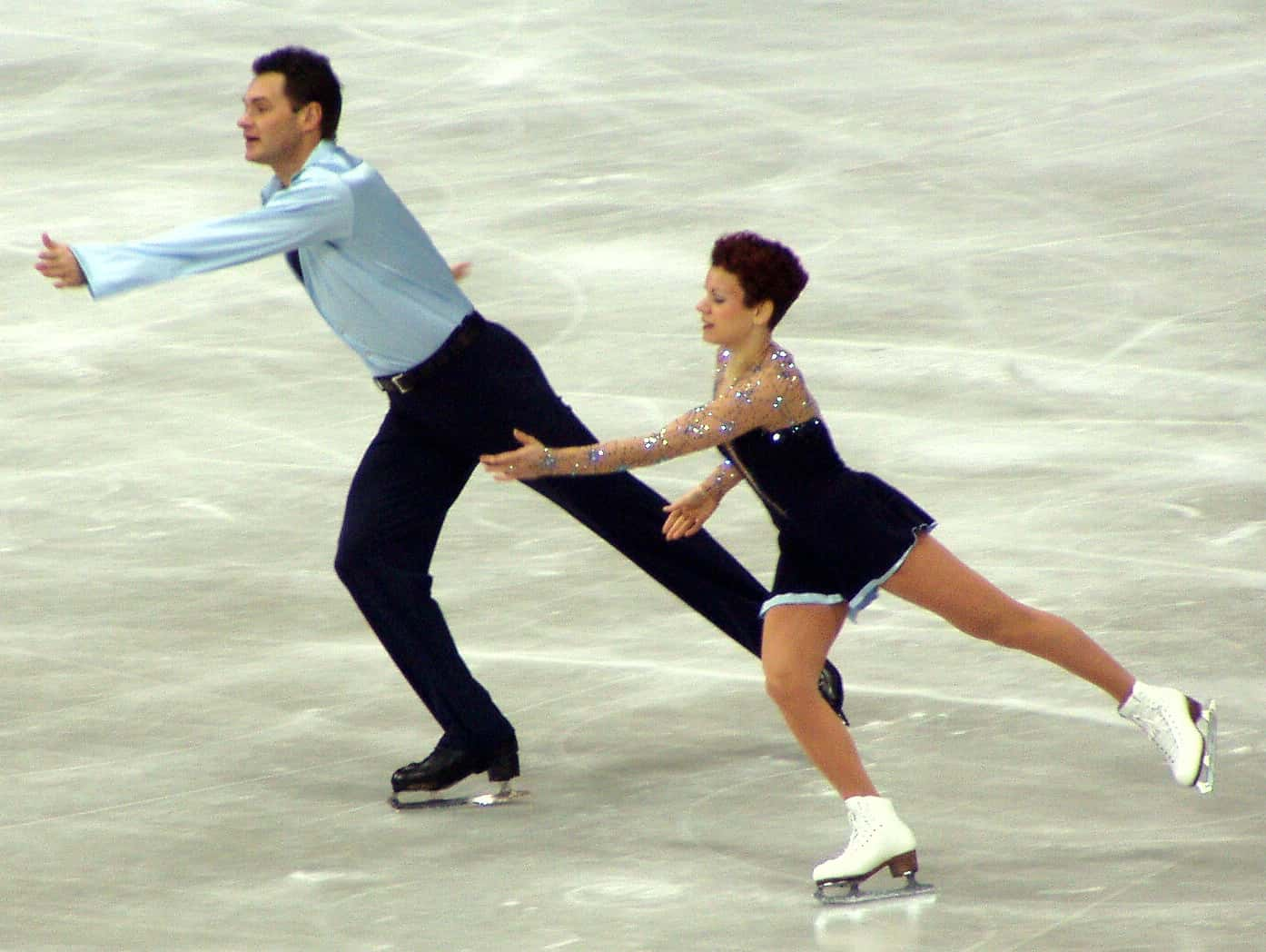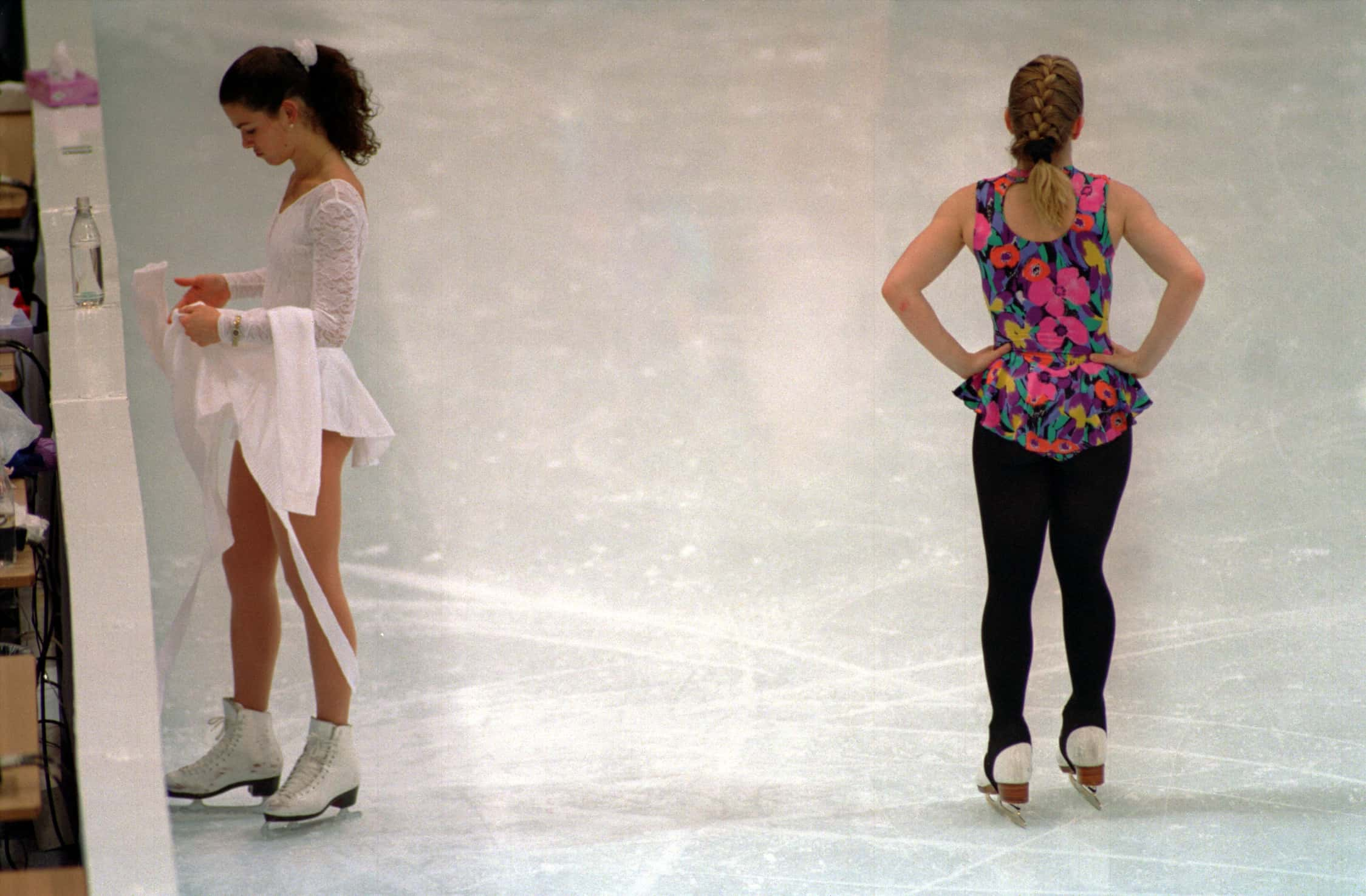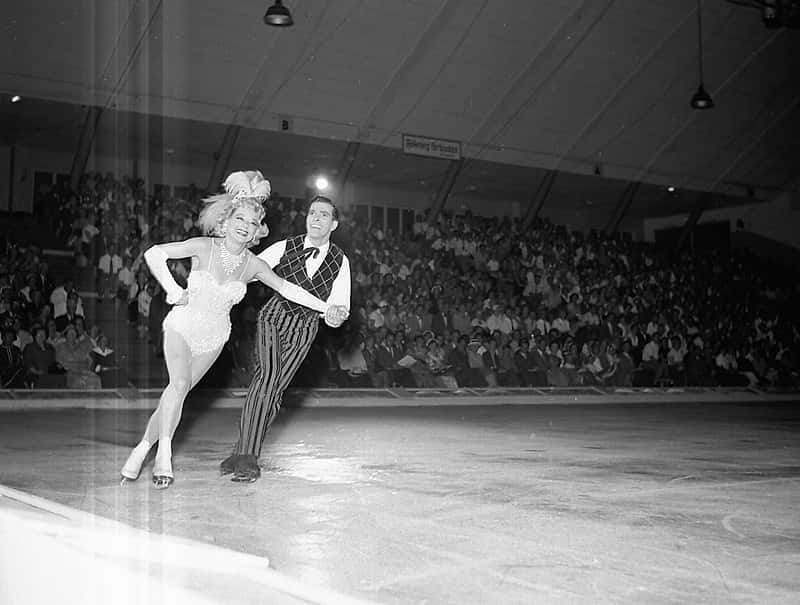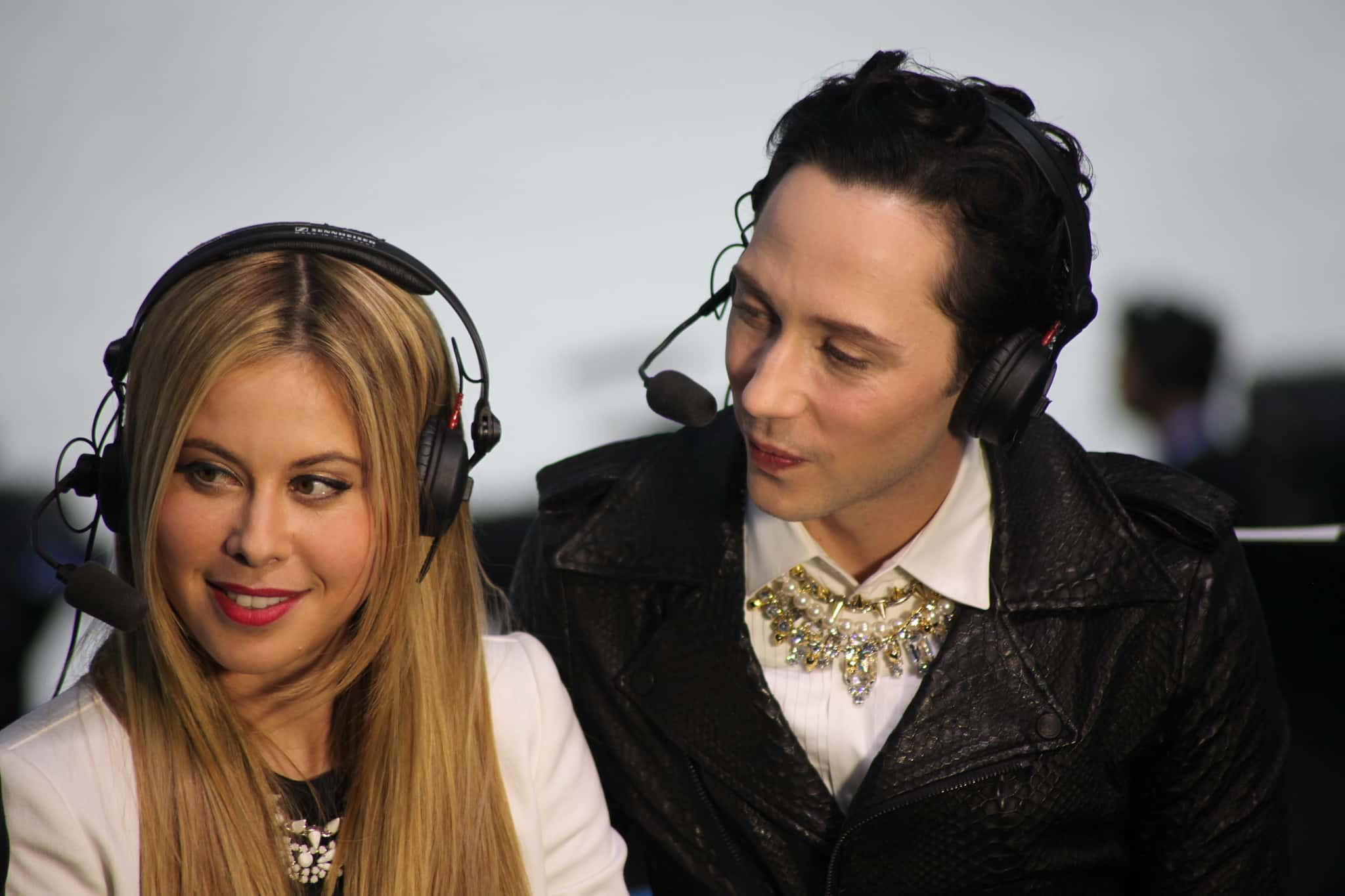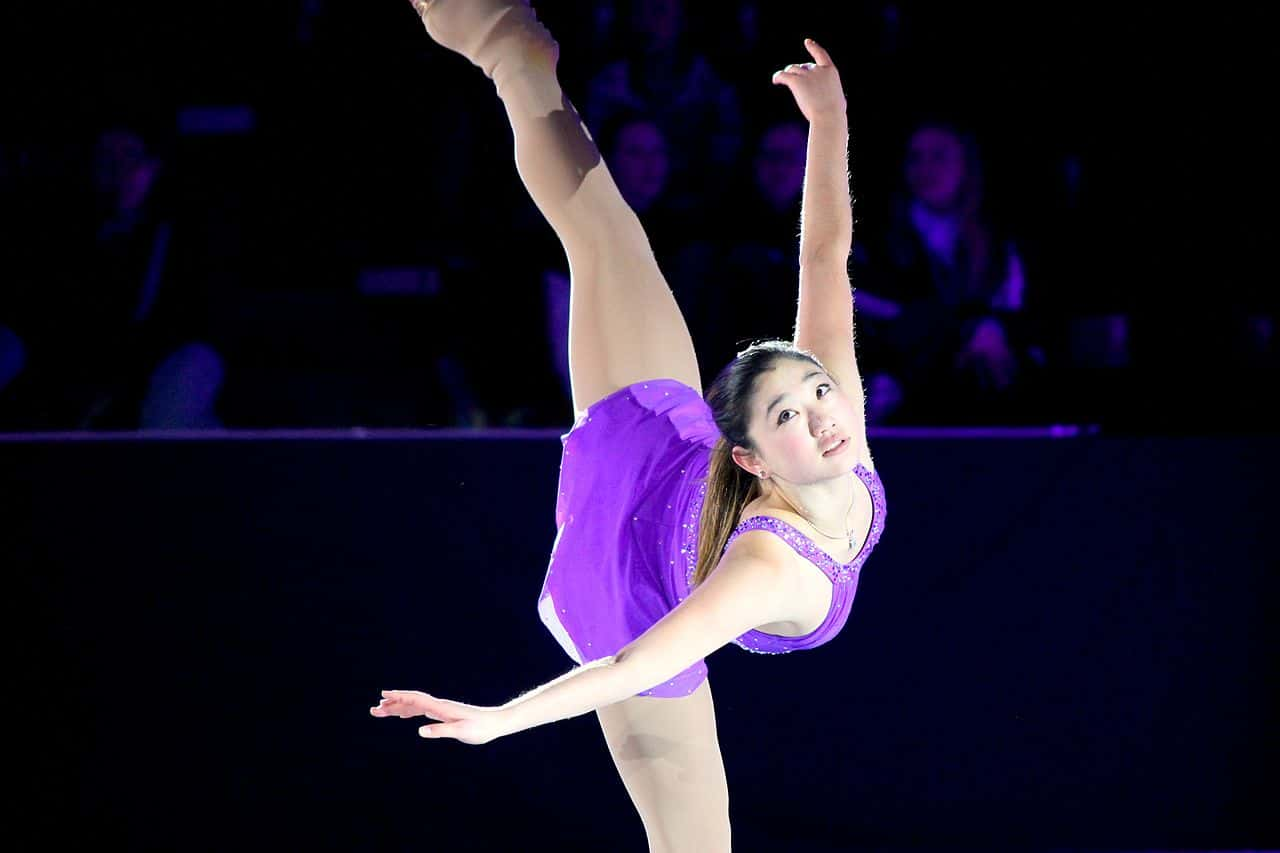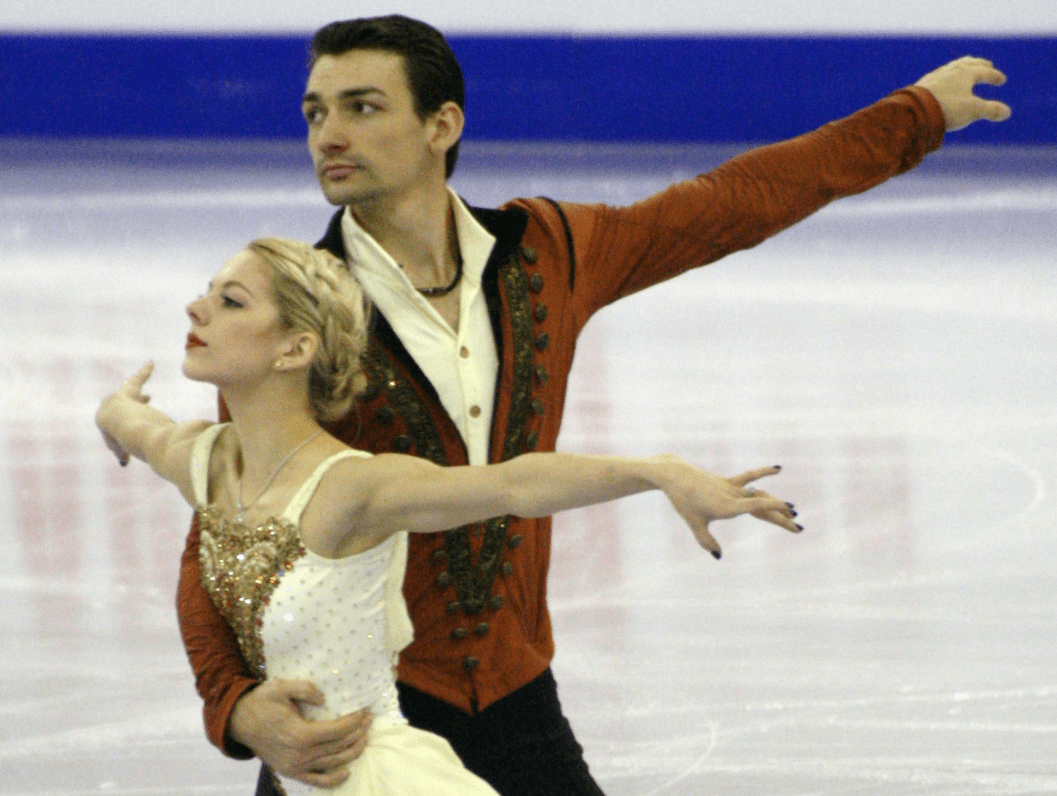“Figure skating is a mixture of art and sport.” —Katarina Witt
“Half of figure skating is opinion, convincing the judges.” —Scott Hamilton
It may seem like the spotlight only lands on figure skating during the Winter Olympics, but this powerful, graceful sport is filled with intensely dedicated individuals who devote their lives to the pursuit of perfection. Sometimes, that pursuit produces champions, but some people have been known to go too far. So lace up and settle in for 42 facts about figure skating.
Figure Skating Facts
42. Europeans Get the Early Edge
The oldest pair of ice skates date from around 3000 BC and were found at the bottom of a lake in Switzerland. The blades were fashioned from the leg bones of large animals and had a hole drilled in each end. Leather straps were used to tie the skates around the foot.
Factinate Video of the Day
41. Going Dutch
Sometime in the 14th century, the Dutch started using iron runners attached to wooden platforms with leather straps, but people still needed to use poles to propel themselves along the ice. Around 1500, the first narrow, double-edged blades began to be used, and soon, everyone was able to donate their poles to the cross-country ski team.
40. Blade Runner
A modern figure skating blade consists of an inside and outside edge. In competition, skaters are expected to glide on one side or the other, but never both at the same time. Each skate also has large, jagged teeth on the toe that are called toe picks. The toe picks are used for the take off on jumps and can never be used during the “gliding” portion of a program.
39. Getting Organized
In the 1600s, ice skating made it across the Channel to England. Being British, they were obligated to take the fun out of everything, and they soon organized the first skating organization, the Edinburgh Skating Club.
38. Shouldn’t It Be Called Ice Gliding?
No one really understood how exactly ice skates functioned until the 20th century. The two prevailing theories, pressure melting and friction heating, both turned out to be wrong. Skaters actually glide along a thin layer of “quasi-fluid” that sits on top of the ice. The layer is one molecule thick but becomes thicker as the temperature rises.
37. Class Divide
By the middle of the 19th century, figure skating had become very popular among the middle and upper classes in England. Meanwhile, people of the working classes preferred racing on their skates.
36. It Figures
The term “figure skating” describes the patterns that were made on the ice by the participants. These were called "compulsory figures" and were all derived from the basic figure eight. Until 1968, compulsory figures were worth 60% of a competitor's score, while today they have all but disappeared from the sport. The change came about because figure skating was getting increased television exposure and the technical portions did not translate well to the small screen.
35. By the Book
The first book on figure skating, A Treatise on Skating, was written in 1772 by British artilleryman Robert Jones. It described a very cramped and formal style consisting of loops and figure eights, quite different from today.
34. Who’s Your Daddy
Jackson Haines, an American ballet dancer from New York City, is known as the father of figure skating. He incorporated ballet moves and techniques into a sport which had previously been comprised of tight, awkward movements. His style, called “international style,” was initially rejected in the US and England, but was embraced by many other European countries.

History's most fascinating stories and darkest secrets, delivered to your inbox daily.
33. Everyone Gets a Medal
Figure skating first appeared in the Olympics in London in 1908. Even though technically part of the Summer Olympics, the figure skating competition was held in October, months after the other events had ended. There were four events: Men’s Singles, Men’s Special Figures, Ladies’ Singles, and Pair Skating. Two of the events only had three entrants, thus guaranteeing everyone a medal.
32. Winter Wonderland
After appearing again at the 1920 Summer Olympics, figure skating found a permanent home at the first Winter Olympics. Held in Chamonix, France, there were only three events contested that year, with Men’s Special Figures having been dropped. A last-minute switch forced the competition to be held on a square rink, which, not surprisingly, became quite a challenge for some of the competitors. No official word on the exact number of skaters who ended up in the front row during their long program.
31. Is That Why It’s Called the Cha-Cha SLIDE?
A fourth figure skating event was added for the 1976 Winter Olympics. Ice Dancing was a couple’s event and it consisted of intricate footwork done in time to the music. The gold and silver medals were won by the Soviet Union, while the Americans took home the bronze.
30. The First Superstar
After finishing eighth at the 1924 Games at the age of 12, Sonja Henie won gold at the next three Olympics. Henie, who had trained as a ballerina since the age of five, was a powerful skater who incorporated as many as 19 different spins into her routine. She was the first skater to wear short skirts above the knee and tightly choreograph her skating to the music. Her performances made her an international star and propelled her to a lengthy career in Hollywood. In addition, she won ten world and six European championships. She singlehandedly transformed the sport of figure skating from dull and boring into the athletic and glamorous event it is today.
29. Best in the World
The United States is the overall medal leader at the World Figure Skating Championships. The US leads the way with 62 total medals, while Austria comes in second with 53. The individual with the most is Swede Ulrich Salchow, who won 13 medals, including 10 gold, between 1897 and 1911.
28. The Early Pioneer
Speaking of Salchow, besides dominating the sport in the early 20th century, he was the first person to land a jump where he took off on the back inside edge and landed on the back outside edge of the opposite foot. The jump is now known as the salchow jump and it's still used in competition today.
27. Calling the Shots
The International Skating Union (ISU) was formed in Scheveningen in the Netherlands in 1892. It oversees not only figure skating and ice dancing, but speed skating as well. Its current home is Lausanne, Switzerland and it is one of the oldest continuously operating sports federations in existence.
26. Who are You to Judge?
Since 2004, international competitions have been scored by the ISU Judging System. A complicated system, designed with checks and balances to help alleviate cheating, it is comprised by two panels, a technical and a judging panel. The technical panel is comprised of five people who review and score each element based on a pre-determined degree of difficulty. The judging panel scores the skaters from zero to ten on each of the five components. Those components are: skating skills, transitions, performance, choreography, and interpretation. The high and low score are thrown out, then the top scores are combined to give the overall score.
 Wikimedia Commons, Professor Caretaker
Wikimedia Commons, Professor Caretaker
25. Fixed It for You
The revamp of the scoring system was a direct response to the scoring scandal that had marred the 2002 Games in Salt Lake City. After the French judge, Marie-Reine Le Gougne, made a tearful confession to the head of the ISU’s Technical Committee, the decision was made to award gold medals to Russia, the original victors, as well as the Canadians, who had initially finished second. She claimed to have been pressured by the head of the French skating organization to favor the Russians as a part of a deal to guarantee the French gold in the Ice Dancing competition. Though she later recanted, the damage had been done.
24. You Do You
In the 2010 Olympics, defending gold medalist, Russian Evgeni Plushenko, was narrowly edged out by American Ryan Lysacek. Plushenko pouted on the medal podium, made disparaging remarks about Lysacek, and declared himself the “platinum medal winner” of the figure skating competition. Stay classy, Evgeni.
23. Button is Fly
American Dick Button won five consecutive world championships from 1948–1952 and was the first American male figure skating star of the 20th century. Button also won seven US championships and Olympic gold in 1948 and 1952. After his competing career he was a top figure skating analyst for many years.
22. A True Innovator
Button is credited with being the first skater to successfully land a double axel jump in competition, the first to land a triple jump, and the first to use the flying camel spin.
21. How Swede It Was
Swedes won the first four Olympic gold medals and a silver the next time. Unfortunately, they haven’t won an Olympic medal of any kind since then. That’s a drought of 20 Olympics and 90 years. On the other hand, Swedish Fish candy were developed in the late 1950s and are still popular and delicious today.
20. Best of the Best
Swedish skater Gillis Grafström and ol' “Platinum” Plushenko are the most successful Olympians in history. Though 11 skaters have won medals at three consecutive Olympic Games, only Grafström and Plushenko did it at four.
19. Russia FTW
Even though they didn’t win any Olympic medals between 1908 and 1964, Russia has since made up for lost time by winning a grand total of 53 Olympic medals. That’s more than any other nation, including the US which checks in with 47.
18. Boris and Natasha Can Really Boogie
The Russians have dominated the Ice Dancing competition since its 1976 debut. Out of a possible 33 medals, Russia has gone home with 18 of them. The US has four, which is one more than France and Great Britain.
 Wikimedia Commons, David W. Carmichael
Wikimedia Commons, David W. Carmichael
17. An American Sweep
At the 1992 World Figure Skating Championships, the US became the first country in history to win all three medals in an event. Kristi Yamaguchi took the gold, Tonya Harding won silver and Nancy Kerrigan brought home the bronze. After the win, Yamaguchi retired, making Kerrigan and Harding favorites to lead the American team at the Olympics in two years.
16. Violence in Detroit
On January 6, 1994, backstage at Cobo Hall in Detroit, Michigan, an unknown assailant hit Nancy Kerrigan on the right leg with a police baton immediately after she had finished practicing for the US National Championships. She was forced to drop out of the competition, and Harding would go on to win gold two days later. Even though she had not placed at the event, the US Figure Skating Association still gave Kerrigan a spot on the national team. This allowed her the opportunity to compete in the Olympics that were scheduled to begin in less than two months.
15. Cracking the Case
After receiving anonymous tips, the FBI turned their attention to Harding’s husband, Jeff Gillooly, and her bodyguard, Shawn Eckhardt. Eckhardt confessed to the FBI and implicated himself, Gillooly, Shane Stant (the man actually who hit Kerrigan) and Derreck Smith (the getaway driver). It had taken the feds exactly six days to crack the case.
14. Olympic Drama
As the FBI continued to investigate whether Harding had participated in the plot, she and Kerrigan competed in the Olympics, held that year in Lillehammer, Norway. Kerrigan managed to win silver, while Harding finished a disappointing eighth.
13. The Aftermath
Gillooly plead guilty to racketeering and agreed to testify against Harding in exchange for a two-year sentence and a $100,000 fine. Smith, Stant, and Eckhardt all plead guilty and were sentenced to 18 months. Harding denied prior knowledge of the plot but instead plead guilty to conspiracy to hinder prosecution, due to her learning details of the scheme after it occurred but not reporting it to the authorities. She was placed on three-years’ probation, given 160 hours of community service and fined $160,000. The USFSA stripped Harding of her 1994 national championship and also handed her a lifetime ban from the USFSA that forbids her from competing or coaching to this day.
12. Clothing Guidelines
Since 2004, women have been able to wear either a dress or slacks in competition. Men are required to wear slacks, but leggings are not allowed. Couples are not required to wear matching outfits in the pairs events. The ISU further states that costumes "must be modest, dignified and appropriate for athletic competition—not garish or theatrical in design.” I suppose they have a fairly specific idea of what qualifies as "garish."
11. Domination
Russian pairs won gold at every Olympic Games from 1964 to 2006. That represents the longest streak for gold medals from one country in any Winter Olympic sport.
10. Must-See TV
When Kerrigan and Harding skated in the preliminaries in the 1994 games, it was the third most-watched sporting event in US television history. It trailed only the 1982 and 1983 Super Bowls, despite the broadcast being delayed four hours due to the time difference.
9. Paging Dr. Skates
After the Olympics are over, Olympic medal winners take many varied paths. Some stay close to the sport by coaching or taking administrative roles, and some choose professions totally independent of their previous life. At least two medal-winning skaters have become surgeons. Debi Thomas (Bronze, ’88), is an orthopedic surgeon, and Tenley Albright (silver, ’52, gold, ’56) trained at Harvard and became a general surgeon in Boston.
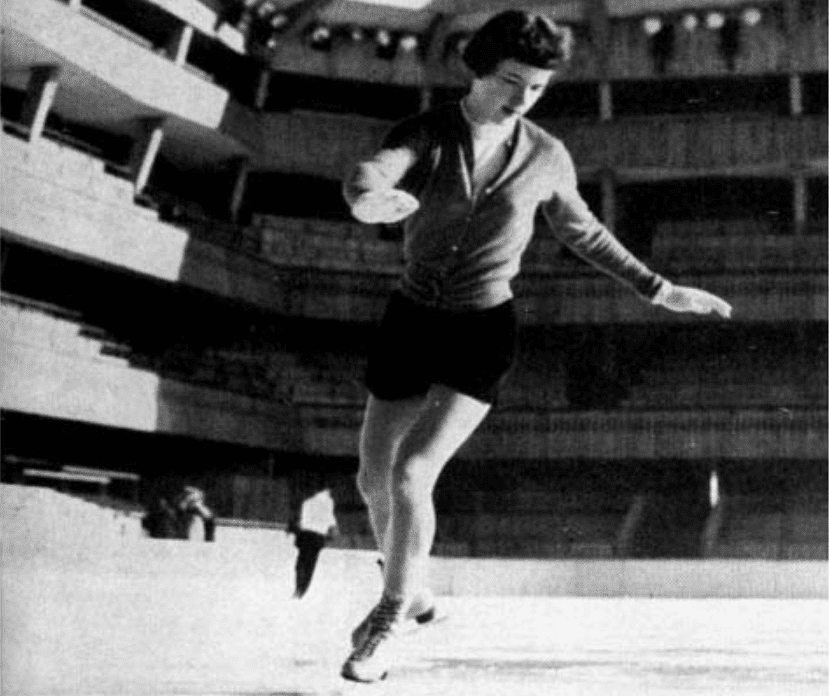 Wikipedia Tenley Albright
Wikipedia Tenley Albright
8. Let it Go
After her Olympic triumphs, superstar Sonja Henie not only became one of the highest-paid actresses in Hollywood, she also starred in the Hollywood on Ice traveling ice show. This tradition is still going strong with Disney on Ice, which began in 1979. It has been a home for many former competitive skaters. This year, Disney is presenting Disney on Ice: Frozen. So, good news to you parents who were finally getting that song out of your head.
7. Out and Proud
Even though some estimate that 25–50% of male figure skaters are gay, for years there was only a single male athlete who came out as of the closet during his career. Rudy Galindo came out in 1996, shortly before winning a bronze medal at the World Championships. That changed in 2015 when current Olympian Adam Rippon announced he was gay in an issue of Skating magazine.
6. Cold as Ice
American medal winners Tara Lipinski and Johnny Weir are the primary American announcing team for figure skating at the 2018 Olympics. Known for their technical expertise and their “tell it like it is” commentary, they are quickly becoming audience favorites.
5. The Rookies are Here
Of the six skaters selected to represent the US in singles at the 2018 Games, only 24-year-old Mirai Nagasu has any Olympic experience. She placed fourth in Vancouver in 2010 before being left off the 2014 squad in a controversial decision.
4. That’s a Lot of Spinning
18-year-old Nathan Chen, who is making his Olympic debut in 2018, was the first male skater in history to land five quad jumps in a single performance. He accomplished the feat at the 2017 US Figure Skating Championships.
3. Partners in Everything
Alexa Scimeca-Knierim and Chris Knierim, who are the sole US entry in the pairs competition, are the first married couple to compete for the US in twenty years. They first began skating together in 2012 and were married in 2016. Their skating coach even officiated the wedding. The coach probably also made sure they didn’t too eat much cake.
2. The Shib Sibs
US ice dancers Maia and Alex Shibutani have been skating together for 19 years. They are one of the 46 sets of siblings that will be competing in the games. This will be their second Olympic appearance, having placed ninth in 2014.
1. Where's the Pied Piper When You Need Him
After Tonya Harding’s part in the infamous knee-cap attack on Nancy Kerrigan, angry fans smeared poo on Harding’s trucks and even infested her house with rats, stuffing them into her mailbox.
 Wikimedia Commons, Andrew Parodi
Wikimedia Commons, Andrew Parodi
Sources: 1, 2, 3, 4, 5, 6, 7, 8, 9, 10, 11, 12, 13, 14, 15, 16, 17, 18, 19, 20, 21, 22, 23, 24, 25, 26, 27, 28, 29, 30, 31, 32, 33, 34

